PUBLIC ART MASTER PLAN PUBLIC ART MASTER PLAN









Canton is a place of vision offering endless opportunities for all. A city located truly where the metro meets the mountains, the community offers scenic views of the Blue Ridge Mountain foothills and the Etowah River, unique shopping, and unmatched dining experiences. With something for everyone, Canton is known for its family-friendly, small town vibrancy in the Northwest Georgia region. The passionate residents who call Canton home are asking: Who are we going to be in the future? How can we invest now so we are known for arts and culture, our incredible outdoor recreation opportunities, and our historic downtown?
The Public Art Plan lays the foundation for the future of public art in Canton and prepares the City to begin injecting artwork into all facets of the community. The coming public art investments will be a tool to communicate that Canton cares seriously about creativity while providing one-of-a-kind experiences to its residents, further cementing their connection to the place they love most.
The Canton Public Art Plan will use the following definition for the Canton Public Art Program:
Public Art shall mean public art, art, artwork or work of art meaning an original physical work created or produced by an Artist that is accessible to the public. Artwork may be free-standing or integrated with the work of other design professionals into a building or site. Artwork may be new or may be an existing work of art.
Artwork may include, but is not limited to:
1. Sculpture: Free-standing, wall supported or suspended; kinetic, electronic; in any material or combination of materials.
2. Murals or portable paintings: in any material or variety of materials.
3. Fiber works, neon, glass, mosaics, photographs, prints, calligraphy, earthworks, any combination of forms of media, including light, sound, literary elements, film, holographic images, and video systems; hybrids of any media and new genres.
4. Furnishings or fixtures, including but not limited to gates, fences, railings, lighting, street lights, signage, seating, if created by artists as unique elements or limited editions.
5. Artistic or aesthetic elements of the overall architecture or landscape design if created by a professional artist or a design team that includes a professional visual artist. Such design elements may include pools, paths, benches, planters, and fixtures and vegetative materials where designed by a professional visual artist and/or are an integral part of the artwork by the artist.
6. Temporary artwork or installation that serves the purpose of providing community and educational outreach.
The following are not considered public artwork for the purposes of the Plan:
1. Art objects which are mass produced or are of standard manufacture, such as playground equipment, fountains, statutory elements, signage, maps, corporate logos, or other functional elements, unless incorporated into an artwork by an artist commissioned for that purpose.
2. Reproductions, by mechanical or other means, of original artwork, except in the case of limited editions controlled by the artist, cast sculpture, film, video, photography, printmaking, or other media arts.
3. Decorative, ornamental, architectural, or functional elements which are designed by the building architect as opposed to elements created by an artist commissioned for that purpose.
4. Artwork in City facilities that are within employee offices or spaces.
5. Services or utilities necessary to operate and maintain an artwork over time.

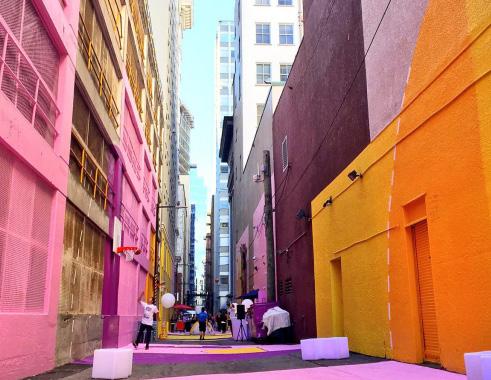
Whether contemporary, irreverent, traditional or something more, sculptures are often the focal points of civic art. Sculptures may commemorate and celebrate our history, express civic pride, or be established as culturally-defining showpieces for the City.
Sculptures can take on many shapes and sizes and often fit well when created in or alongside gateways, parks, gathering spaces, and community centers. Because communities can celebrate and enhance their civic identity, they are especially appropriate in parks and downtown settings.

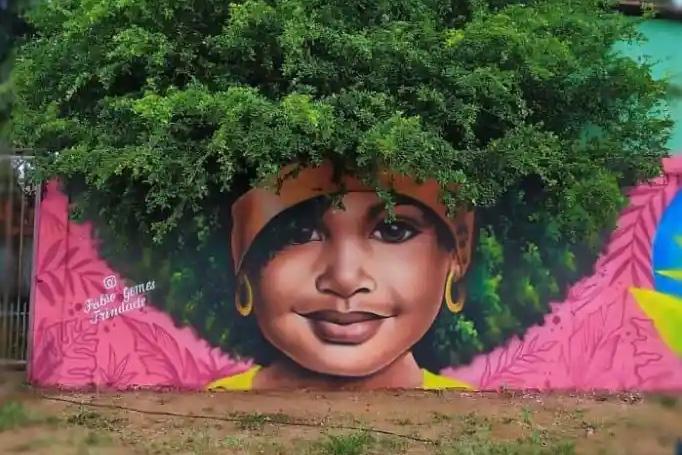
While curating permanent works of art as part of the collection is important, ephemeral works such as murals allow for the exposure of many artists over a short period of time rather than a few artists over a long period of time.
Functional art provides an opportunity for municipalities to explore artists generating everyday items such as benches, trash cans, light poles, or bollards. Functional elements appear in every public space and provide cities with an opportunity to creatively use funds for art rather than on standard furnishings.
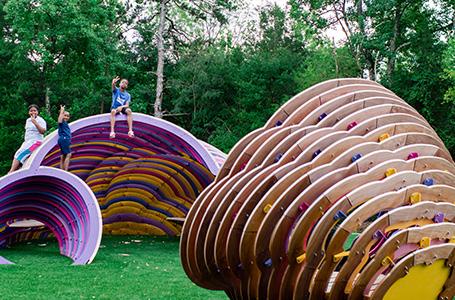

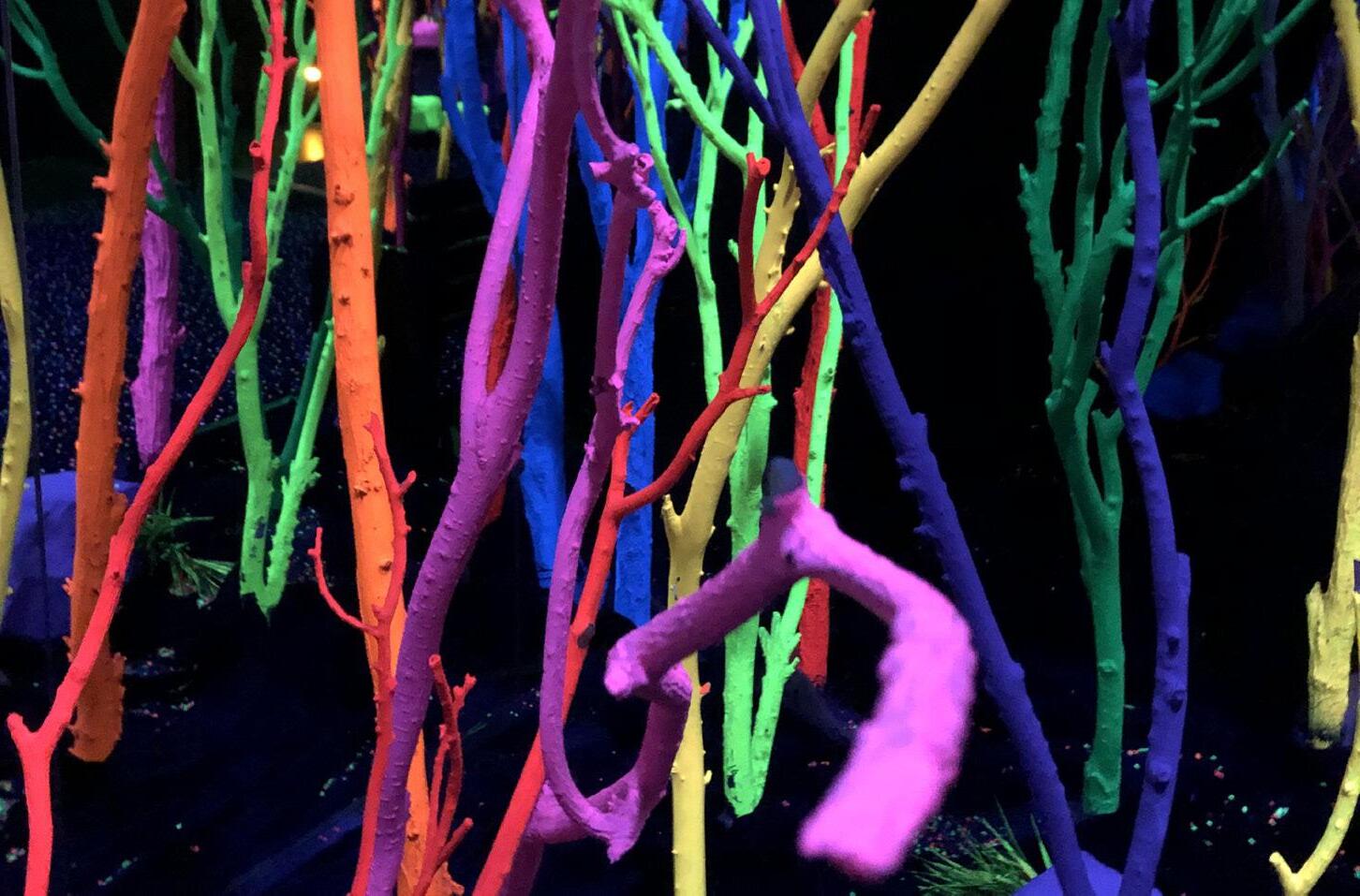
Contemporary artists use lighting in creative and interesting ways in order to manipulate the built environment with limited physical impacts. Light installations may be used on existing buildings, in parks on substantial landscape features, or as part of a larger installation of sculpture. They may be especially useful and impactful when used in infrastructure projects.
Site-specific art is created to enhance and celebrate its surroundings in which an artist considers the site first before anything else. Site-specific art uses the area to enrich the experience of the place itself. Telling the story of the location, neighbors, or residents of the area can be helpful -- or the art can exist simply to elevate the site.
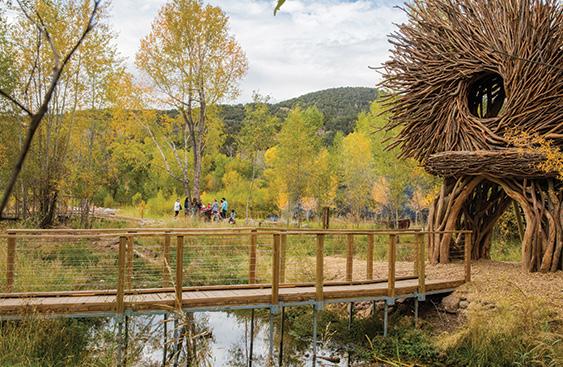
Art can be long-lasting, or it can be something experienced for a short period of time. Though temporary art is not intended to live for a generation, it can have a lasting impact on a community by creating a sense of surprise and joy in unexpected places. Some ideal locations for temporary installations include construction sites, sidewalks, alleyways, parks, and temporarily empty spaces and storefronts.
Temporary art can be done inexpensively and easily, provide opportunity for additional artist engagement, and it can be a small investment for a huge impact. In whatever form, its short lifespan gives energy to the space and drives excitement among the community. Temporary art invites collaboration, whether it be with local schools or community groups, and creates opportunity for the artwork to evolve with the community over time.

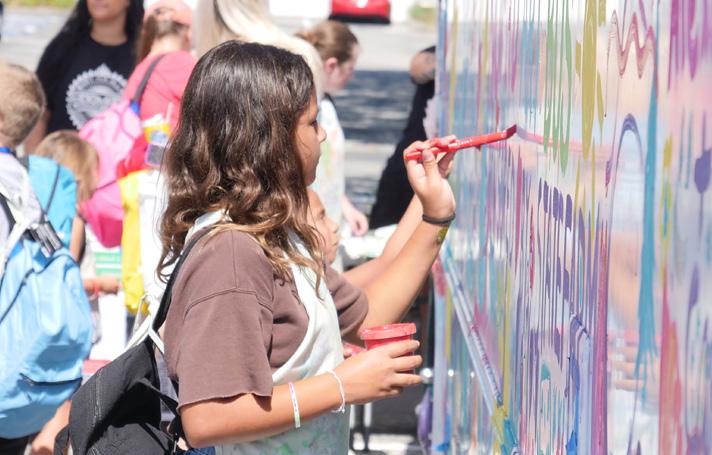
Participatory art is more focused on the creation of an art piece than any of the typologies listed previously. Specifically, a piece is made by the community to enhance and celebrate its process and participants. Collaborative art pieces use people to enrich the experience and heighten the feeling of pride and ownership.

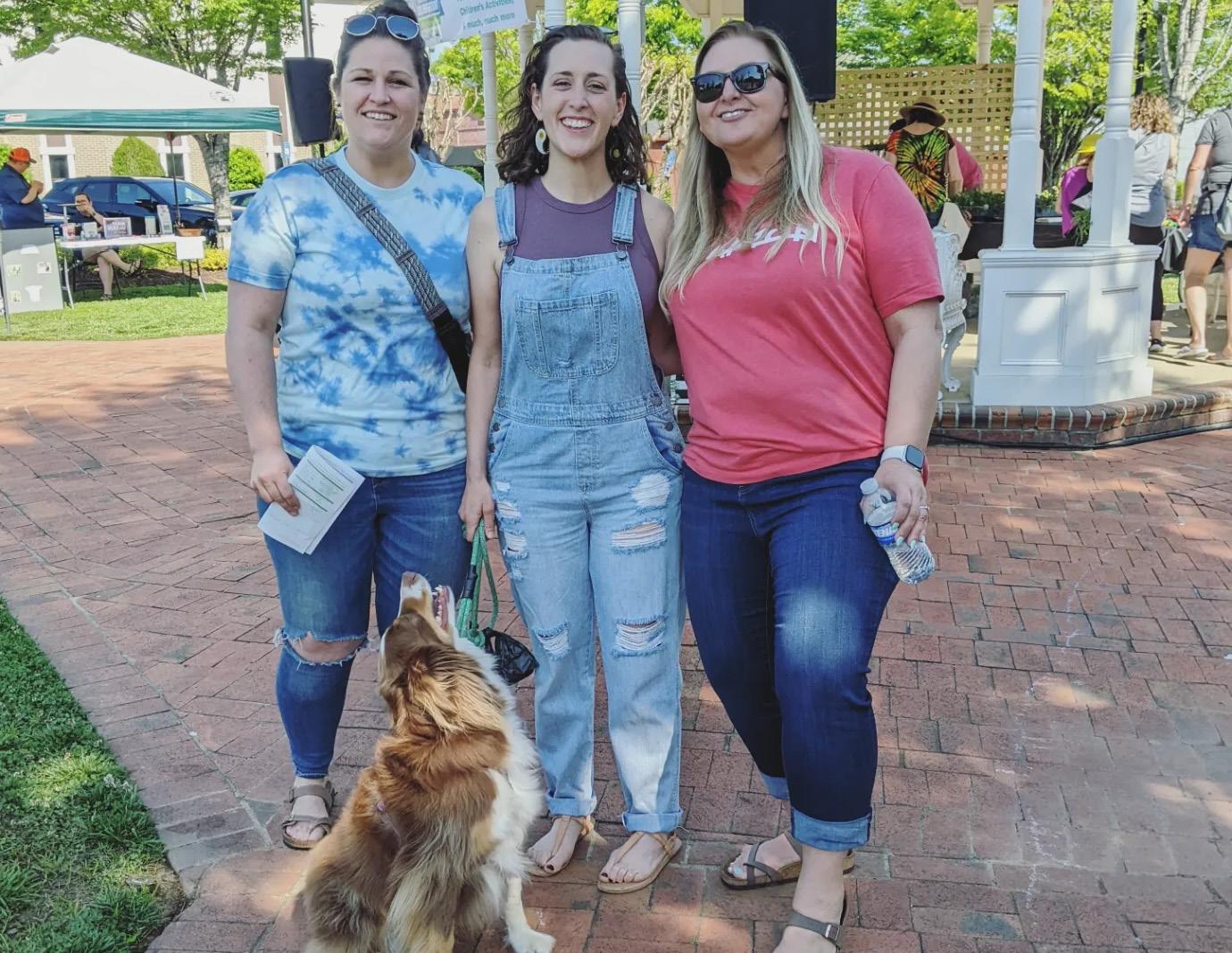
The Public Art Plan is a result of many hours of conversation with stakeholders and members of the public. The team worked diligently to engage a variety of community members from November 2022 until May 2023. The following provides insight into the community’s desire for public art.
The purpose of the community character framework is to celebrate all that makes Canton special so artists and visionaries communicate the values and special qualities that make Canton, Canton. The descriptors, historic tidbits, and imagery come together to create a family of components that speak to the identity of Canton.
Community input is a critical component to creating a holistic and strategic public art plan. One measure of receiving input is through community surveys, the results of which are presented in the following section to illustrate the community opinion and pulse on public art and to inform future strategies and results.

IN NEIGHBOR -HOODS
SCHOOLS MAJOR INTERSECTIONS
WITHIN STREETSCAPES OR MEDIANS

PUBLIC BUILDINGS
PARKS & NATURAL SPACES
GATEWAYS DOWNTOWN
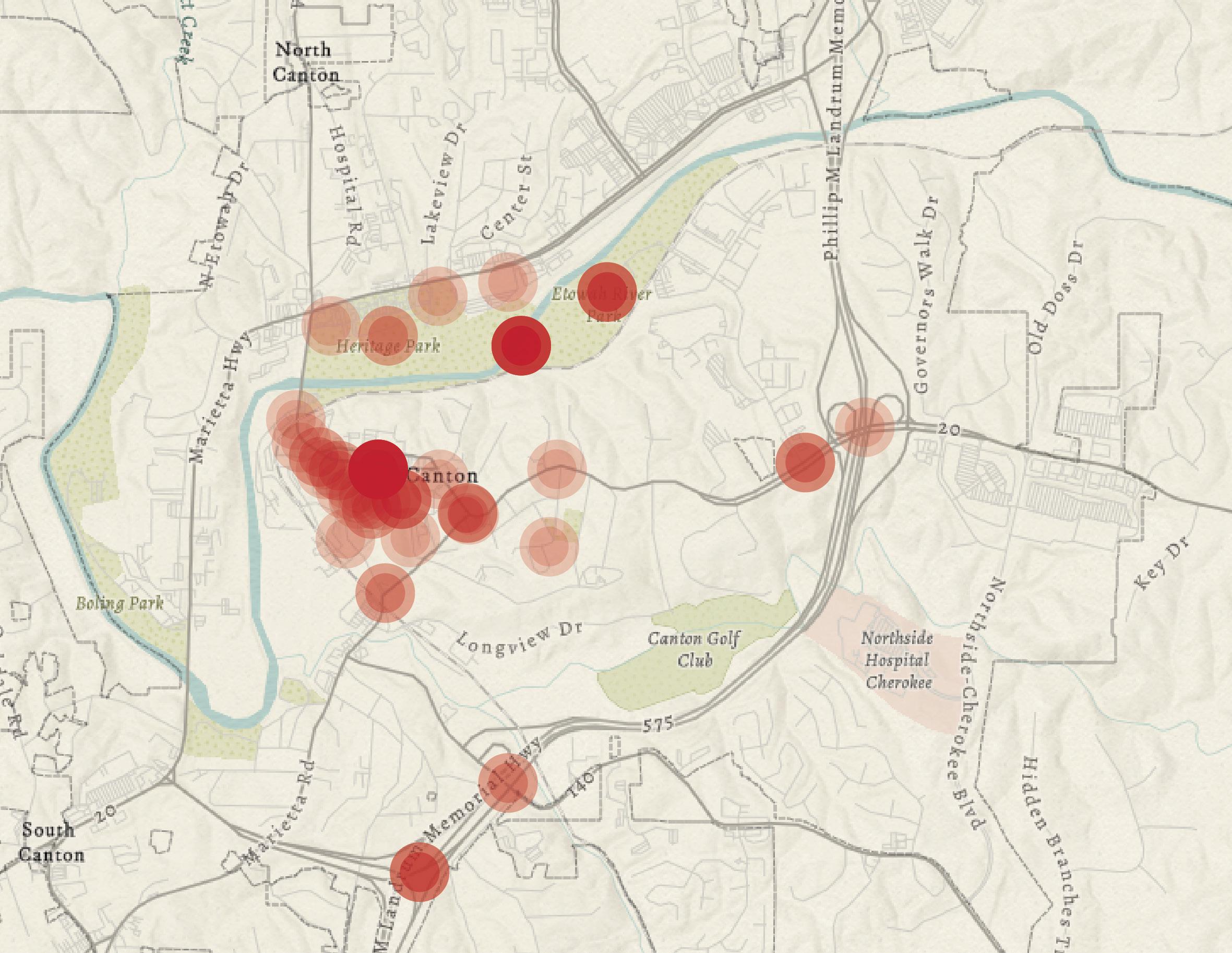
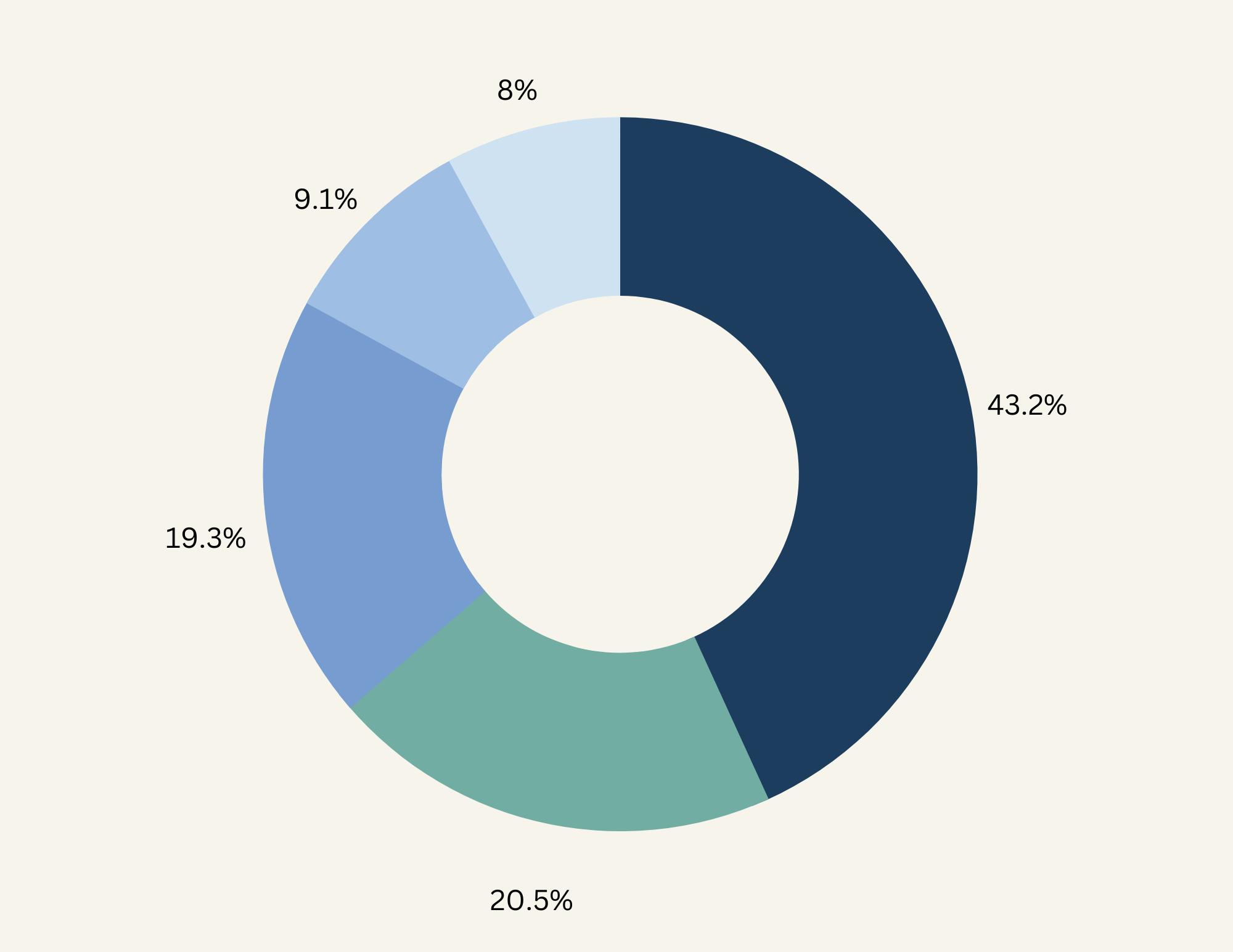
Canton feel like home no matter where you spend time: Parks, festivals, or favorite local restaurants.

• Historic Canton Theatre
• 4th of July
• Historic Textile Mill
• First Fridays
• Brown Park
• Farmers Market
Canton is lush, diverse in natural beauty, and a place for outdoor adventure.
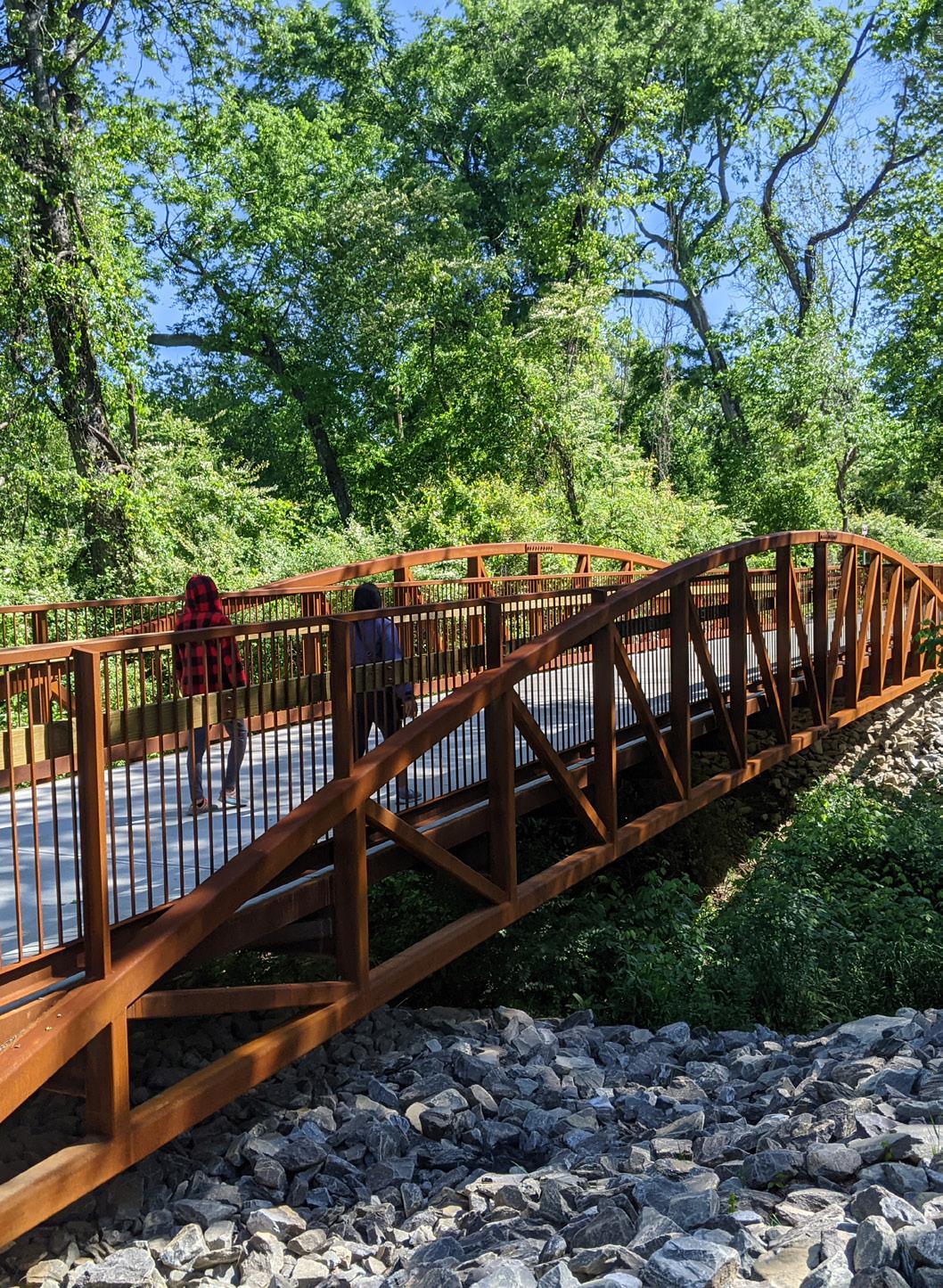
• Lake Canton
• Mountain Bikes
• Etowah River
• Blue Ridge Mountain Foothills
• Kayaking
• Etowah River Darter
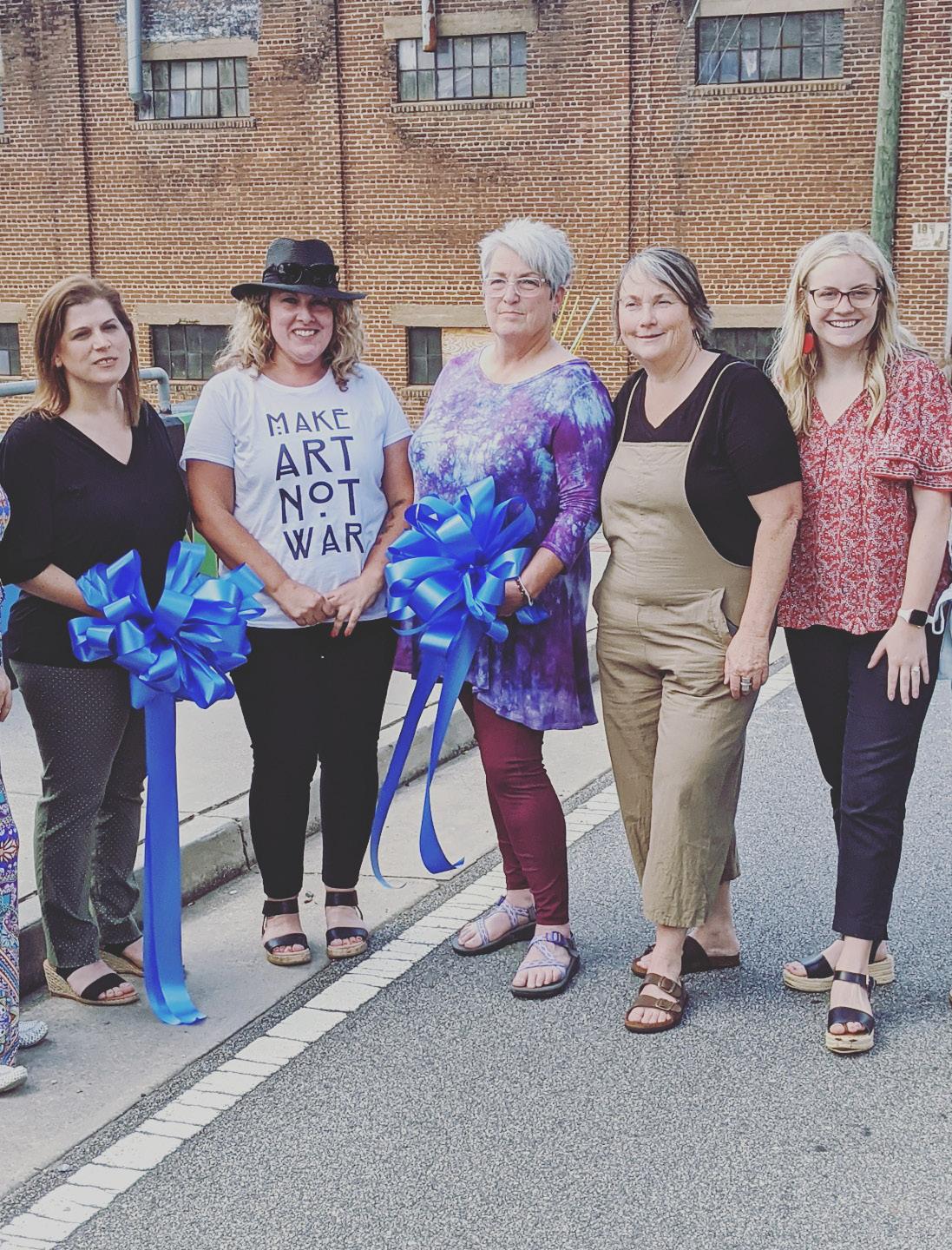

Canton has been home to generations past whose marks are still all over town.
• Canton Denim (Salty Dog Image)
• Cherokee Nation
• Jones Mercantile
• Downtown Gazebo
• Brick Buildings
• Main Street
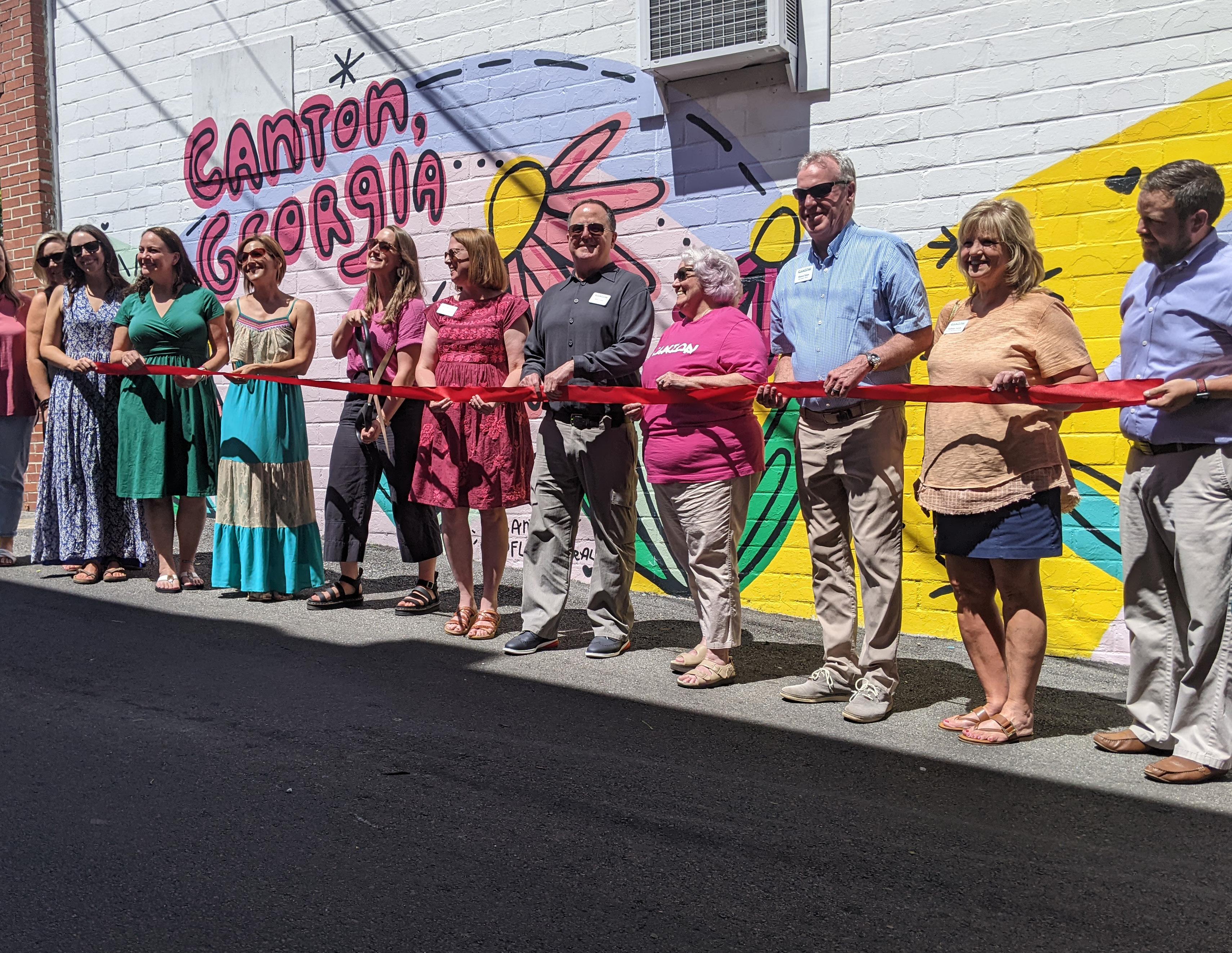
This chapter presents a culmination of community desires and defined direction for the City of Canton in 5 objectives and 16 strategies. When implemented over the next decade, the objectives will spur additional investment throughout the City and will help Canton achieve its goals of becoming a destination known for its arts, culture, historic downtown, and outdoor recreation.
Public art can play a crucial role in ensuring high quality experiences for residents, supporting the broader economy, and reinforcing the identity of a place. The following are core values for the Public Art Program and are in no particular order. These goals should be used when implementing public art projects, and though no one project will accomplish all goals, projects should satisfy one or more of the goals.
Tell stories that are unique to the history, natural setting, and/or the culture of Canton.
Present a wide variety of meaningful public art from artists with varied experience levels, inclusive of all people and backgrounds.
Build awareness and enthusiasm for the City by connecting residents to one another through an investment in public art.
Each objective is accompanied by strategies to support the objective, timing, potential partners, staff requirements, relative cost, and relative impact.
The timing for each strategy is defined as:
The cost for each strategy has been defined as:
Relative impact for each strategy has been defined as:
• Immediate
• 1 to 2 years
• 3 to 5 years
• 5+ years
• $: $0 to $250,000
• $$: $250,000 to $1 million
• $$$: $1 million+
• Low: Low impact strategies are essential to the long-term health and sustainability of Canton’s cultural sector but may go unnoticed by the community-at-large.

• Medium: Medium impact strategies will improve the resident experience at the individual level.
• High: High impact strategies will fill a significant gap in the market; set the foundation for new programs, projects, or practices; or directly shift the general perception of Canton as an arts and cultural community. In short, these strategies are catalytic and should be viewed as such.

Safe, attractive, connected, and inviting neighborhoods are the foundation of Canton's hometown appeal.
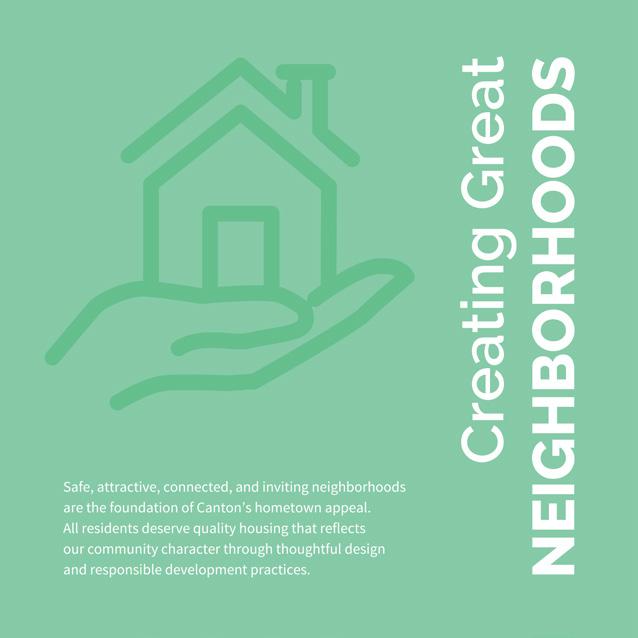
All residents deserve quality housing that reflects our community character through thoughtful design and responsible development practices.
Canton residents appreciate our natural beauty, proximity to the mountains, ample greenspaces, and the Etowah River. Projects in the City will promote interaction with nature through sustainability, stewardship of resources, and innovative design.
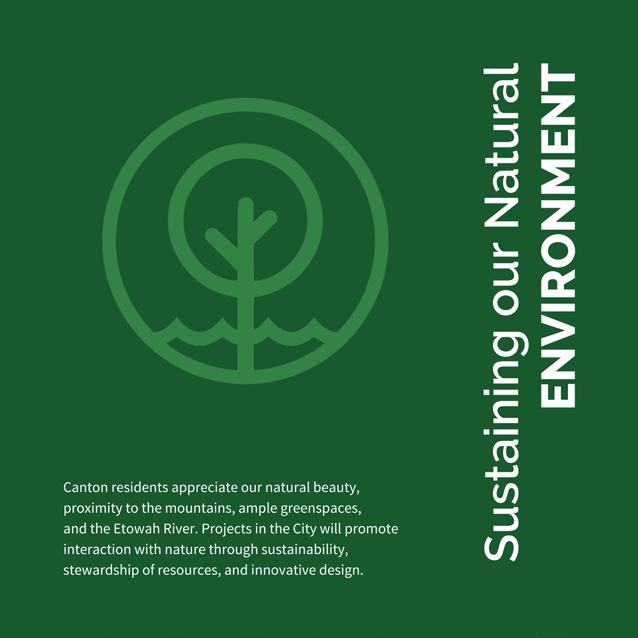
The diverse cultures and communities within Canton are vibrant and engaging. The City encourages economic, cultural, and social diversity.
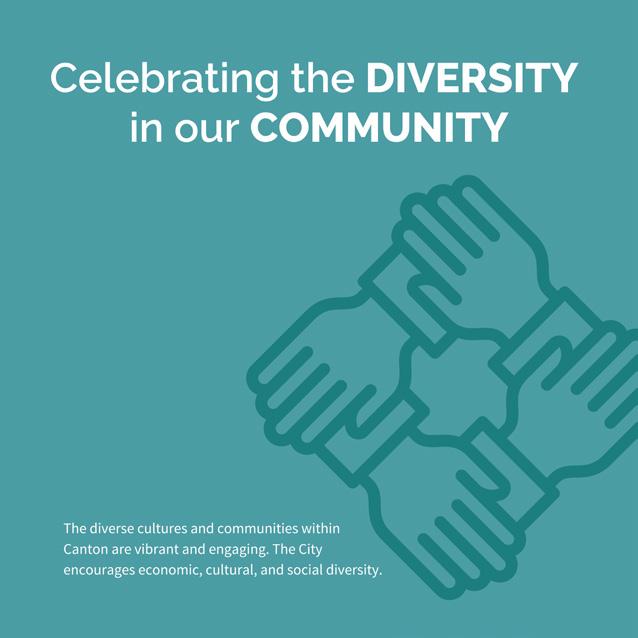
A healthy community provides access to nature. Residents should be connected with local parks through trails, sidewalks, and additional transportation options.
Recreational opportunities should be available and inclusive for all.

Utilizing existing business strengths in industry, healthcare, and an entrepreneurial spirit, Canton seeks to expand its economic footprint. Diverse and innovative business growth will support jobs, attract investment, and create tourism opportunities.
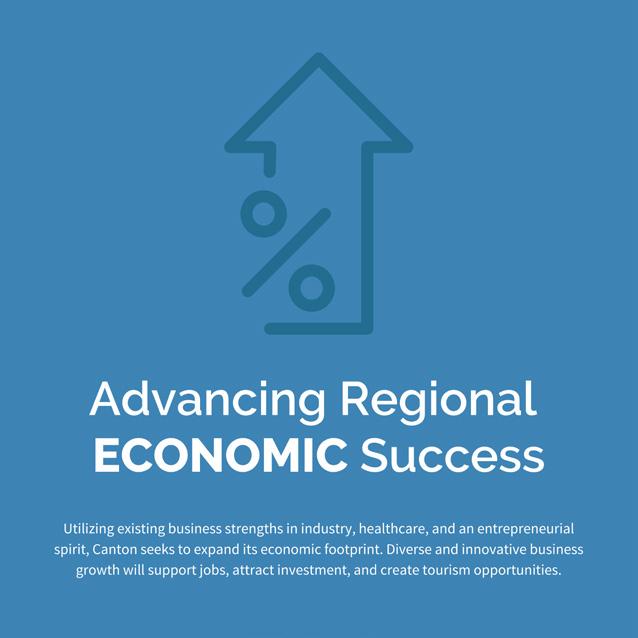
Citizens, businesses, and visitiors need access to the Canton infrastructural network to succeed in their goals. Transportation, power supply, gas availability, water and sewer, digital connectivity are part of building a great network for success.
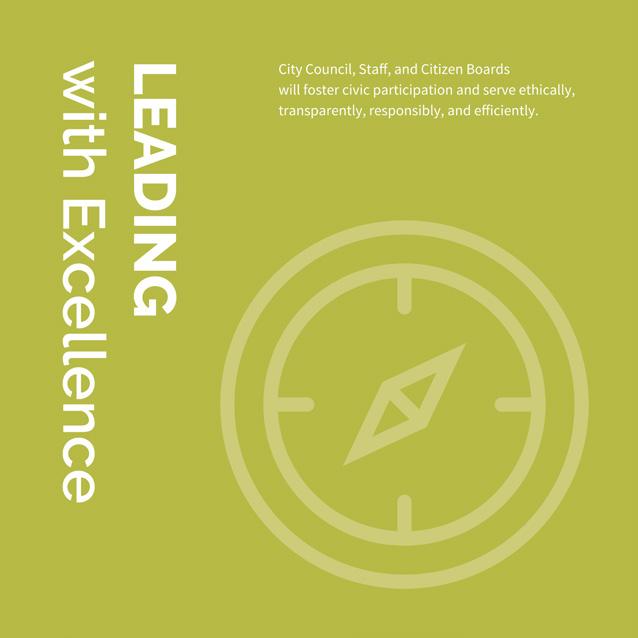
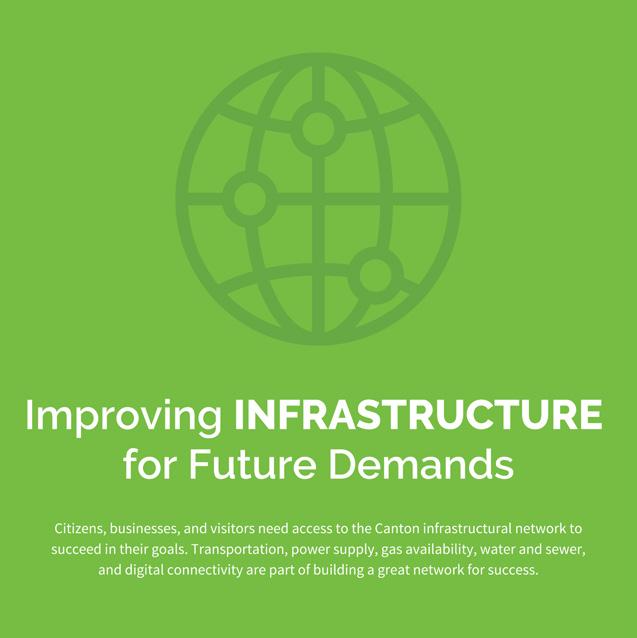

Preservation, entrepreneurship, arts and culture, and communitycentric activities are the cornerstones of economic development within Downtown Canton. Benefiting the entire City, downtown redevelopment creates jobs, attracts investment, increases property values, and generates tourism.
City Council, Staff, and Citizen Boards will foster civic participation and serve ethically, transparently, responsibly, and efficiently .
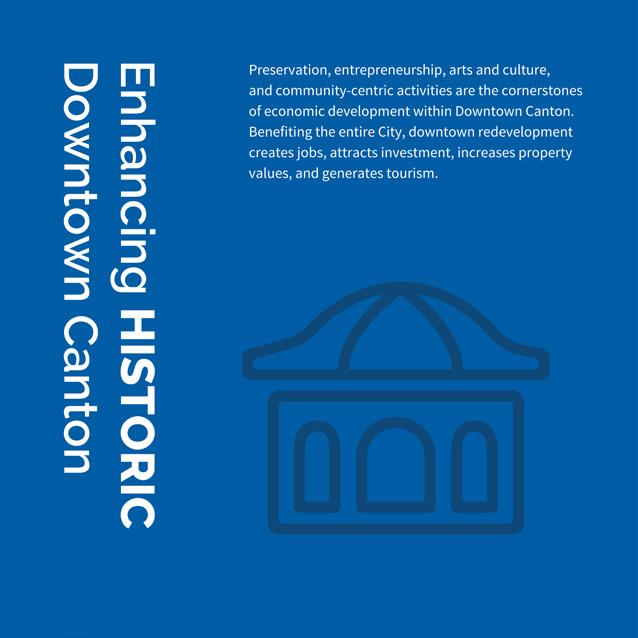
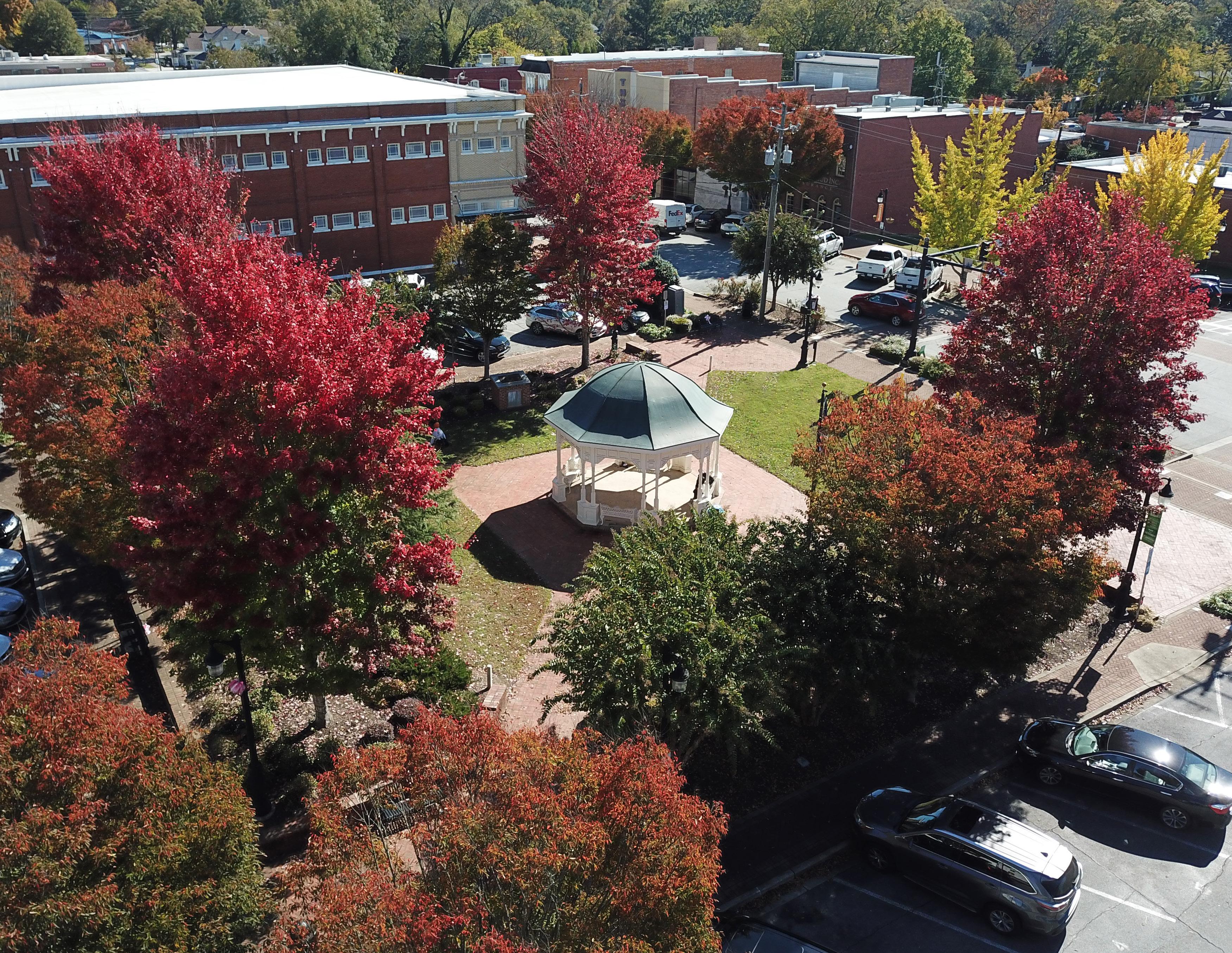
Establish the Canton Public Art Program through the adoption of sound public art policy and administrative processes.
Adopt the following policies to govern the Canton Public Art Program: Maintenance, Collection Management, Donation, and Mural Guidelines.
In order to establish a successful Public Art Program, Canton will adopt a number of policies. The policies include a Collection Management Policy, Donation Policy, Maintenance Policy, and Mural Guidelines. The aforementioned policies and guidelines will do the following:
• Establish a definition for public art;
• Develop a process for public art to be commissioned; and
• Establish a Public Art Committee to work with staff in selecting artists for commissioned works.
Each policy directs a specific aspect of the Program and ensures the City is following consistent procurement practices; maintaining its commissions through long-term planning and maintenance; governing the Program with strong public trust; and providing clear direction for artists, private developers, and donors to follow when participating in the Program.
Time Frame for Implementation: Immediate
Staff Involvement: Public Art Coordinator, City Manager, Economic Development Manager, Community Planning Manager
Potential Partners: N/A
Relative Cost: $
Relative Impact: Medium
Applicable Roadmap Tenet: Advancing Regional Economic Success
This policy establishes the overall definitions contained within the policy.
This policy establishes the management practices of artworks acquired through the solicitation and donation processes. These pieces are considered part of the City’s Permanent Collection and must be cared for in accordance with the Policy and Procedure for Maintenance and the Collection Management Policy. The Collection Management Policy is intended to maintain the value of the City’s Permanent Collection and guard against inappropriate disposal of any of its pieces.
This policy establishes the donation process for artworks not commissioned by the City of Canton. Each proposed donation must come with a plan to fund and deliver ongoing maintenance, or the resolution accepting the public art must identify how maintenance of the donated public art will be funded. Donation requirements, responsibilities of the donating party, and the process for donating a piece of public art are outlined in this policy.

This policy establishes the procedure for maintenance of the future art collection. Direction for surveying the collection, working with future artists to establish a maintenance plan for any commissioned work, and inspection guidelines are included.
Priority Actions:
1.Adopt the proposed public art policy presented in the Appendix.
2. Evaluate the effectiveness of the adopted policy in 5 years to understand if any changes should be made.
Fund the public art program through the establishment of a percent-for-art policy, establishing the City’s commitment to public art through a sustainable funding model.
In order to achieve the vision of the community for public art in Canton, sustainable funding is a necessary first step. There are many options for funding a municipal Public Art Program exist, and several factors were considered when determining the best mechanism for Canton. The City of Canton should allocate 2% of the City’s capital improvement budget to public art. This funding stream will guarantee funding for public art projects regardless of economic events that cause constrictions in funding projects. This policy also guarantees that public art projects are planned for and executed annually as long as Capital Improvement Projects (CIP) are underway and municipal construction continues.
Time Frame for Implementation: Immediate
Staff Involvement: Public Art Coordinator, City Manager, Economic Development Manager, Community Planning Manager
Potential Partners: N/A
Relative Cost: $
Relative Impact: High
Applicable Roadmap Tenet: Advancing Regional Economic Success
The allocation for all projects should be calculated based on the local fund’s portion of total construction costs, excluding all costs for demolition and real property acquisition for any given capital project. In addition, the appropriation for public art should be calculated only on the original appropriation for design and construction services, excluding any amounts appropriated for change orders. A public art allocation should not be made for road maintenance, capital expenditures for maintenance in general, underground infrastructure and underground utility projects with no above ground components other than roads. When there are utility projects with above ground components that are visible, a donation toward public art should be considered.
Types of Projects to Include Public Art Within:
• New Road Construction
• Streetscape Projects
• Parks and Trails
• Community Facilities
• Police Stations
Priority Actions:
1. Adopt the percent for art funding mechanism to support capital projects in Canton in perpetuity.
2. Evaluate the effectiveness of the funding mechanism to determine if the mechanism is generating enough income to support the public desire for public art.

Reframe the Canton Cultural Arts Commission’s role to focus solely on public art.
In order to steward the Canton Public Art Program and to build a world-class public art collection, the Cultural Arts Commission should focus solely on public art. As the City expands its funding for broader cultural arts, the Commission can expand its role to support staff in whatever ways deemed necessary.
Time Frame for Implementation: Immediate Staff Involvement: Public Art Coordinator
Potential Partners: N/A
Relative Cost: $
Relative Impact: Low
Applicable Roadmap Tenet: Leading with Excellence
The Cultural Arts Commission should focus on the following responsibilities:
1. Support staff in establishing criteria and eligibility standards for applicants of projects;

2. Support staff in establishing criteria for awarding projects;
3. Support staff in evaluating proposed donations of public art;
4. Support staff in evaluating removal of artwork from public display; and
5. Act principally in an advisory capacity to staff in any matter pertaining to public art.
1. Present a reframing of the Cultural Arts Commission’s roles and responsibilities at a Cultural Arts Commission Meeting for a formal vote.
2. Once the Canton Cultural Plan has been completed, expand the role of the Commission to align with recommendations from that Plan. (Strategy 1.4)
Significant interest in arts and culture broadly exists in Canton. The City should complete a cultural planning process to identify broader cultural goals and opportunities within the community. The scope of the cultural plan should include but not be limited by:
Time Frame for Implementation: 1-2 years
Staff Involvement: Public Art Coordinator, City Manager, Economic Development Manager
Potential Partners: N/A
Relative Cost: $
Relative Impact: Medium
Applicable Roadmap Tenet: Celebrating the Diversity of Our Community Leading with Excellence
• High-level physical assessment of existing facilities to determine deficiencies, strengths, and opportunities.
• Facilities recommendations with consideration to:
1. Estimated square footage;
2. Desired facility features / amenities, including special equipment;
3. Recommendations for building new, renovating, retrofitting, or other;
4. Accessibility, including travel distance, economic barriers, universal design standards, offerings for mobility and sensory-impaired individuals;
5. Priority for bringing online (near, mid, or long-term).
• For each recommended facility provide:
1. High-level, estimated capital costs;
2. Estimated upfront and ongoing operating costs;
3. Estimated revenues;
4. Potential funding requirements;
5. Staffing requirements.
• Appropriate policy regarding ADA accessibility
• Methods for capturing/tracking annual visitor numbers, marketing expenditures, and ROI.
• Definition of the City’s and other organizations’ roles as they pertain to the arts in Canton;

• Recommended programs related to the implementation of the mission, vision, and goals for the arts, ensuring adherence to accepted best practices;
• Recommendations on how to increase diversity, equity,
inclusion, and access to existing and future arts and culture within the City;
• Review and recommendation of overall cultural and heritage tourism strategy;
• A menu of financial resources that will be required to implement the recommended programs and facilities as well as targeted strategies to obtain the funding for each recommendation; and
• City staff recommendations to fulfill goals set during the cultural planning process.
1. Identify funding for a Cultural Plan in FY 2025.
2. Release an RFP for Cultural Planning Consultants and select a consultant.
3. Execute the planning process and implement recommendations.
4. Evaluate the effectiveness of the plan in 10 years to understand if the processes and facility recommendations were fulfilled and if they are effective.
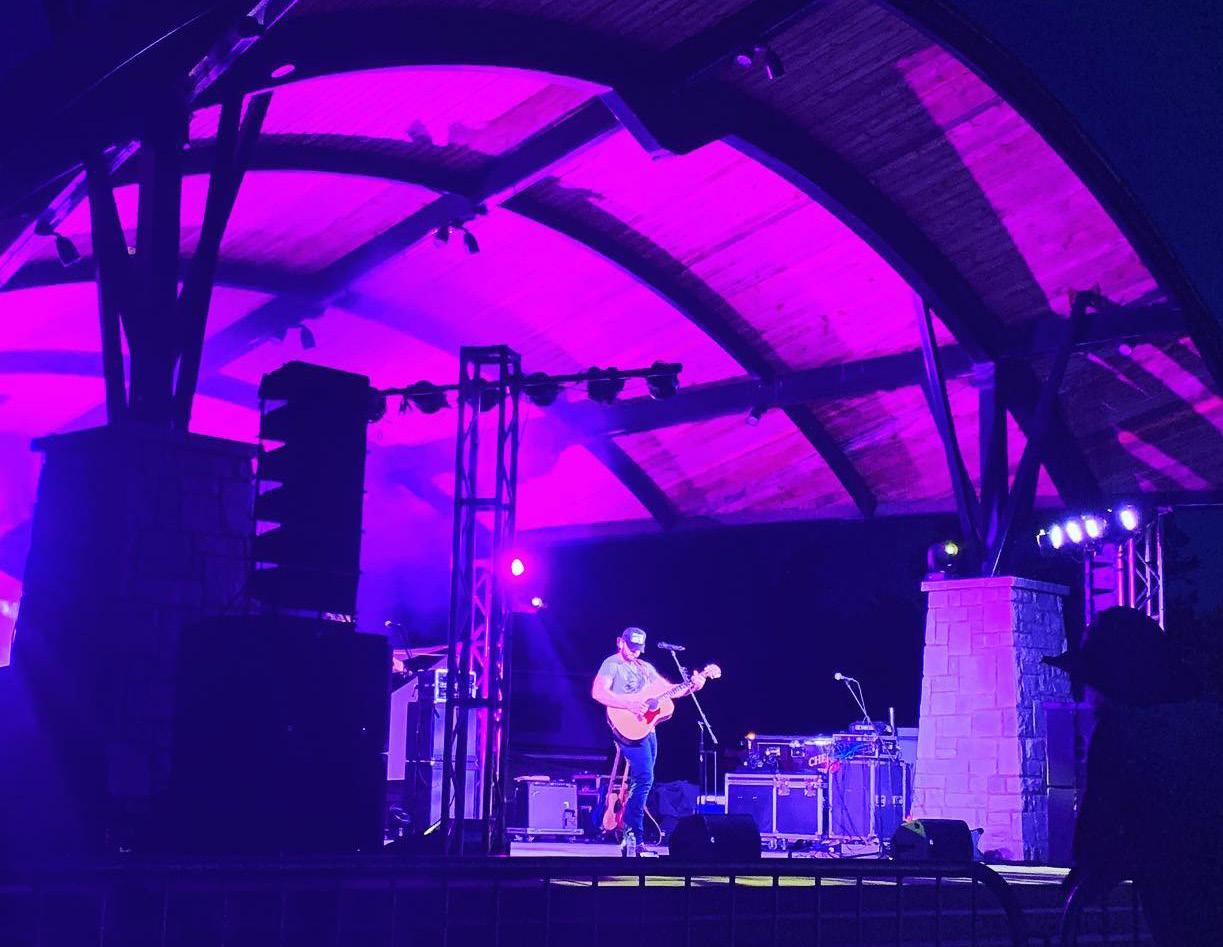
Develop destination-defining events and spaces that use public art as a key element of the experience.
Work with a public artist to develop a signature monumental playground in one of Canton’s parks.
The City should select a site for a large destination playground where an artist is integrated into the design team. Instead of ordering a standard playground for a new park in Canton, why not have a one of a kind destination where families from all over the region and state will visit? Subject matter is endless when it comes to engaging imagination and when artists and children work together, the possibilities are unlimited.
Time Frame for Implementation: 5+ years
Staff Involvement: Public Art Coordinator, Economic Development Manager, City Manager
Potential Partners: N/A
Relative Cost: $$$
Relative Impact: High
Applicable Roadmap Tenet:
Connecting Citizens to Parks and Recreation
Advancing Regional Economic Success
Leading with Excellence
Regional Attractions of Similar Scale:
• Abernathy Greenway, Sandy Springs, GA
National Examples:
• The Gathering Place, Tulsa, OK
• Domino Playground, Brooklyn, NY
Priority Actions:
1. Begin identifying potential locations for a large-scale destination playground. This could be in the proposed park in South Canton or on the future site of the Riverfront Park. An approximate budget for the playground should be developed to provide the public and the artist an understanding of intended scale.
2. Work with the park designers of the respective park(s) to determine the scale of the playground and what the experience will be at the playground. This exploration should involve the community including children and their families.
3. Release an RFQ for a public artist to work with the City to develop the playground concepts.
4. Select an artist to work with and launch broader community engagement with the artist to define and design the full play experience that integrates the child and family.

Ensure small-scale placemaking investments take place throughout Canton and are highly visible downtown and in commercial areas.
A number of specific placemaking interventions should be considered downtown and in commercial areas. These strategies could include investing in artist-designed benches, distinct light poles and trash cans, and tree grates integrated into the streetscape that are unique to each area. A number of these improvements could become standard on a district by district basis, creating novel experiences between commercial districts and downtown. A plan should be pursued for downtown and each commercial area that would establish design standards for pedestrian amenities.
Time Frame for Implementation: 3 to 5 years
Staff Involvement: Public Art Coordinator, Economic Development Manager
Potential Partners: Downtown Development Authority, Local Businesses
Relative Cost: $
Relative Impact: Medium
Applicable Roadmap Tenet:
Creating Great Neighborhoods
Celebrating the Diversity of Our Community
Advancing Regional Economic Success
Enhancing Historic Downtown Canton
1. Determine locations for prioritization of placemaking activities and investments.

2. Identify budgets for each area and intended lifespan for each investment type.
3. Determine what the procurement process will be for each intervention and if the projects will be more temporary or long-lasting.
4. Hire artists to create the interventions.
5. Perform ongoing monitoring of the interventions to understand maintenance needs and future direction for placemaking interventions.
Invest in public art along Canton’s growing trail system and in parks.
Canton is known for its parks and trails and is not slowing down when building supportive infrastructure for residents to enjoy spending time outdoors. Arts and Culture are becoming a growing part of how people enjoy parks and recreation spaces throughout the country. From natural sculpture hidden along trails to art focused skateparks, parks and trails have become a place to experience artwork in nature.
Time Frame for Implementation: 3 to 5 years
Staff Involvement: Public Art Coordinator, Economic Development Manager
Potential Partners: Downtown Development Authority, Local Businesses
Relative Cost: $
Relative Impact: Medium
Applicable Roadmap Tenet:
Creating Great Neighborhoods
Celebrating the Diversity of Our Community
Advancing Regional Economic Success
Enhancing Historic Downtown Canton
The Parks Department should integrate artists into their design teams when planning for parks, especially when designing functional elements of parks. This opportunity should be examined for existing parks as well as for future parks. In addition to functional art, artwork should be commissioned to support the unique identity of each individual park, strengthening the connection between the park and its users. These improvements should also consider reinvestment in parks.
• Boling Park
• Brown Park
• Burge Park
• Etowah River Park
• Harmon Park
• Heritage Park
• Lake Canton
• McCanless Park
• South Canton Park (proposed)
Specific Investments within Parks Could Include:
• Artist designed playgrounds
• Benches
• Wayfinding signage within the park and at entries
• Trail Markers
• Pavilions or Shelters
• Murals on Basketball Courts
An investment in public art along Canton’s growing trail system would be an incredible asset to Canton, increasing the Trail’s draw. An investment of this scale would demonstrate the City’s continued pursuit of remarkable experience that integrates arts, culture, and recreation. A number of sculptures could be placed along the trail that vary in scale and sizes and are placed throughout the trails. Some pieces should be at trail heads while others should only be accessible by bike or by walking.
1. Develop a schedule of future park and trail investments to understand when funding will become available to place public art in parks and on trails utilizing the adopted funding mechanism listed in Objective 1.

2. Understand available funding for each future facility based on anticipated total cost of the project.
3. Understand if segments of trail have already been built that will connect to new trail facilities.
4. Develop a project narrative for each piece of public art in proposed facilities.
5. Determine procurement process to execute public art projects in new parks and on new trails while understanding the connection between existing parks and trails and investment in new facilities. Determine if other investments should be made to provide a seamless experience for users.
6. Issue relevant RFQs for public artists to be considered for public art on trails and in parks. Select finalists to prepare concepts.
Develop a signature public art event that occurs on a biennial basis.
Temporary public art events are gaining in popularity across the world and provide significant benefits to the communities that host them. Usually for a long weekend, a temporary art event has a theme and stacks cultural experiences on top of the main event public art. The work could be lights, murals, or sculpture. Events are ticketed and seek to recoup some costs associated with the event. Often these events take place every two years and seek to become a destination within the region they take place in. Canton should consider utilizing the Etowah River or Lake Canton as a location for the event. Consider collaboration with other cities in the region to create a multi-city experience.
Time Frame for Implementation: 3 to 5 years
Staff Involvement: Public Art Coordinator, Economic Development Manager
Potential Partners: Cherokee County, Other Cities within Cherokee County, Other Cities on the Etowah River
Relative Cost: $$
Relative Impact: Medium - High
Applicable Roadmap Tenet: Connecting Citizens to Parks and Recreation
Leading with Excellence
1. Determine what type of event the City of Canton and/ or partners should host and what year would be appropriate to host the first event. Sample budgets for the events listed above are:
• Chalk the Block Festival: $15,000-$30,000
• Mural Festival: $100,000-$200,000 (includes murals, travel stipends, and material costs)
• Temporary light festival: $400,000-$1,000,000
2. Select a site for the first annual event and begin marketing the event to artists and residents.

• Release a call for artists to participate with approved budgets for each work, locations, date, and times for the event.
• Select artists
• Book secondary activities and programming for the event
• Market event to residents
3. Execute the first temporary public art event and gauge participants on their appetite for future events that may be more ambitious. This could be completed using surveys and monitoring the level of social media activity around the first event.
4. Determine if the City wants to host a small scale event for a number of years with potential partners before committing to host a large scale event.
Invest in iconic public art in existing public spaces.
An investment in large-scale commissioned artwork is an essential step in developing a public art program and will project early success of the city’s investment. Locations vary in type, but all prominent locations throughout the City. A mix of large-scale sculpture and intimate small-scale work will create varying landscapes and different points of interest for those experiencing the collection.
Time Frame for Implementation: 3 to 5 years
Staff Involvement: Public Art Coordinator, City Manager
Potential Partners: N/A
Relative Cost: $$
Relative Impact: Medium
Applicable Roadmap Tenet: Creating Great Neighborhoods
Celebrating the Diversity of Our Community
Advancing Regional Economic Success
Enhancing Historic Downtown Canton
Iconic Locations for Consideration Include:
• Cannon Park
Priority Actions:
1. Evaluate what key locations throughout the City could benefit from a piece of public art.
2. Prioritize locations and develop a budget for each location.
3. Release RFQ for each location and select finalists.
4. Place public art in identified locations.

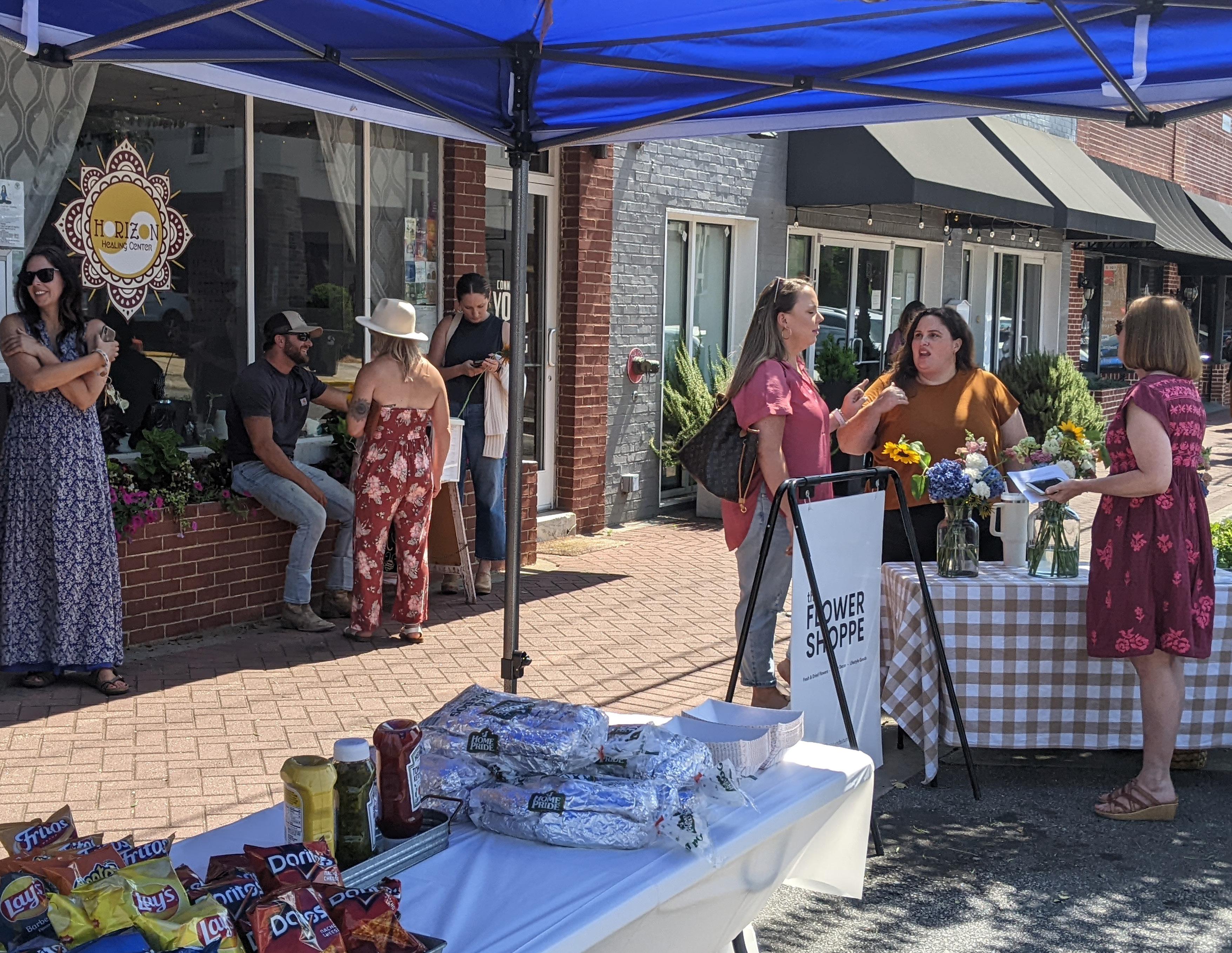
Invest in public art in downtown Canton and designate the City’s Creative District(s).
Invest in iconic public art in existing public spaces.
Canton is home to a number of local businesses and institutions that support arts and culture or are within the arts and culture sector. Designating an area as the City’s Creative District will recognize and support the role of arts and culture in a growing City like Canton and will enhance opportunities for the creative economy. Designating this area will signal to local businesses as well as to visitors that the arts are seen as integral to building community, engaging residents, encouraging entrepreneurship, and attracting visitors.
Upon designation, the City should begin dedicating significant resources to this geographic area for a number of efforts including but not limited to supporting signature events in the District, supporting creative placemaking efforts, encouraging creative economy use in commercial buildings, and implementing public art projects throughout.
Time Frame for Implementation: 3 to 5 years
Staff Involvement: Public Art Coordinator, City Manager
Potential Partners: N/A
Relative Cost: $$
Relative Impact: Medium
Applicable Roadmap Tenet:
Creating Great Neighborhoods
Celebrating the Diversity of Our Community
Advancing Regional Economic Success
Enhancing Historic Downtown Canton
To prepare for designation, the City should determine the following:
• Boundaries of the Creative District
• How the Creative District can support existing and upcoming marketing efforts
1. Establish boundaries for the Creative District.
2. Create a leadership/operating plan for the District. a. The operating plan should identify a steering committee and manager. Sub-committees may be formed as needed in areas such as marketing, cultural resources, and design.
3. The District’s leadership team should establish a vision and mission for the District, as well as preliminary goals and objectives. Suggested goals and objectives might be: a. Improving access to the District
i. Continue to increase and diversify utilization of city owned cultural resources
ii. Build additional creative / cultural programs throughout Canton

iii. Support the development of additional cultural assets, such as gallery space, public art, and small scale placemaking investments
iv. Establish a methodology for tracking visitation and return on investment. The methodology should include visitor counts and spending data, which can be
gathered from third-party platforms. Visitor counts can also be gathered through event ticket sales and old- fashioned head counts. Businesses can be asked to provide reporting on staffing, spending, and annual sales, all of which can be used to calculate economic impacts.
4. Launch the Canton Creative District.Explore the viability of a Creative Incentive Program to support the building of the Creative District.
The City should explore the viability of a gallery and live music incentive program which would support art galleries and performance art. The program would allow the owner of a for-profit gallery to apply for a rent subsidy of 30% of the total rent for 12 months and a start-up grant to offset costs related to relocation, advertising, and tenant improvements. The City should set the rent subsidy using the current market rate of commercial space within the City’s Creative District as outlined in Strategy 3.1.
Time Frame for Implementation: 1 to 2 years
Staff Involvement: Economic Development Manager, City Manager
Potential Partners: Business Owners
Relative Cost: $ to $$
Relative Impact: High
Applicable Roadmap Tenet: Advancing Regional Economic Success
Enhancing Historic Downtown Canton Leading with Excellence
This Program should be undertaken as a public-private partnership with community institutions.
Priority Actions:
1. Prepare for the Creative Incentive Program within the Creative District by evaluating the following:
a. Boundaries in which the incentive would be offered;
b. Identification of annual funding for this program;

c. Lease term;
d. Determination of market rate rental rates for commercial buildings;
e. Qualifications of applying businesses to receive the incentive; and
f. Compliance with qualifications.
2. Launch the Creative Incentive Program within the Creative District.
3. Develop metrics desired for reporting purposes on the impact of the incentive.
4. After one year evaluate its effectiveness to understand if expansion of the program is necessary.
Invest in temporary public art projects downtown to enhance the identity of downtown Canton.
An investment in temporary public art projects in a specific geographic area can make a high impact with relatively low costs. Some communities develop a sculpture tour program in which plinths are poured and sculpture rotates annually. Other communities invest in temporary sculpture on parklets, privately owned walls, or in street trees that are small-scale, enhancing the pedestrian experience for those within the specific geographic area.
Time Frame for Implementation: 3-5 years
Staff Involvement: Public Art Coordinator, Economic Development Manager
Potential Partners: Downtown Businesses
Relative Cost: $
Relative Impact: Medium
Applicable Roadmap Tenet: Creating Great Neighborhoods
Celebrating the Diversity of Our Community
Enhancing Historic Downtown Canton
Downtown Canton should invest in a series of temporary projects that enhance the built environment for a period of approximately 3 months to one year.
1. Determine the following program elements:
a. Determine a budget and a timeframe for the temporary projects within downtown Canton.
b. Determine if a theme should be maintained within the projects and if one artist or a number of artists will work to develop the temporary projects.
c. Develop a list of ideal locations throughout Downtown Canton for placement of the pieces.
d. Determine what infrastructure is needed to support the pieces.
2. Launch the RFQ process for artists to select an artist or artist team for the project.
3. Develop marketing materials to highlight the experience throughout the community.

Launch the Canton Mural Grant Program.
Canton should establish a Mural Grant Program that subsidizes mural creation throughout the City through granting property owners up to a percentage of the cost of the mural on their property. Funds should be distributed on a first come, first served basis. Applicants should submit their contract with their selected artist and submit proof of final payment to receive the grant. Funding for this program will be based on annual budget appropriations. Success of the program should be evaluated after 2 years.
Time Frame for Implementation: 1 to 2 years
Staff Involvement: Public Art Coordinator, Economic Development Manager
Potential Partners: Local Property and Business Owners
Relative Cost: $
Relative Impact: Medium
Applicable Roadmap Tenet: Creating Great Neighborhoods Celebrating the Diversity of Our Community Advancing Regional Economic Success
Enhancing Historic Downtown Canton Leading with Excellence
Applications should include:
• Images of the proposed wall
• Proposed dimensions of the mural
• A concept rendering from the selected artist
• Proposed budget
• Contract with artist
Priority Actions:
1. Identify a funding source for the grant and at what level the City will support private investment in murals. A tiered approach to the grant subsidy could be explored. Qualifiers could include:
a. Visibility from parks and trails;
b. Visibility to major roadways;
c. Within downtown;
d. Within the City’s Creative District; and
e. Location within historic districts or neighborhoods.
2. Develop any forms and informational content needed to launch the Mural Grant Program including the following:
a. Application
b. FAQs
c. Required supporting documentation
3. Launch the Mural Grant Program.
4. Solicit feedback from selected artists and property owners on their experience with the program and what could be improved.

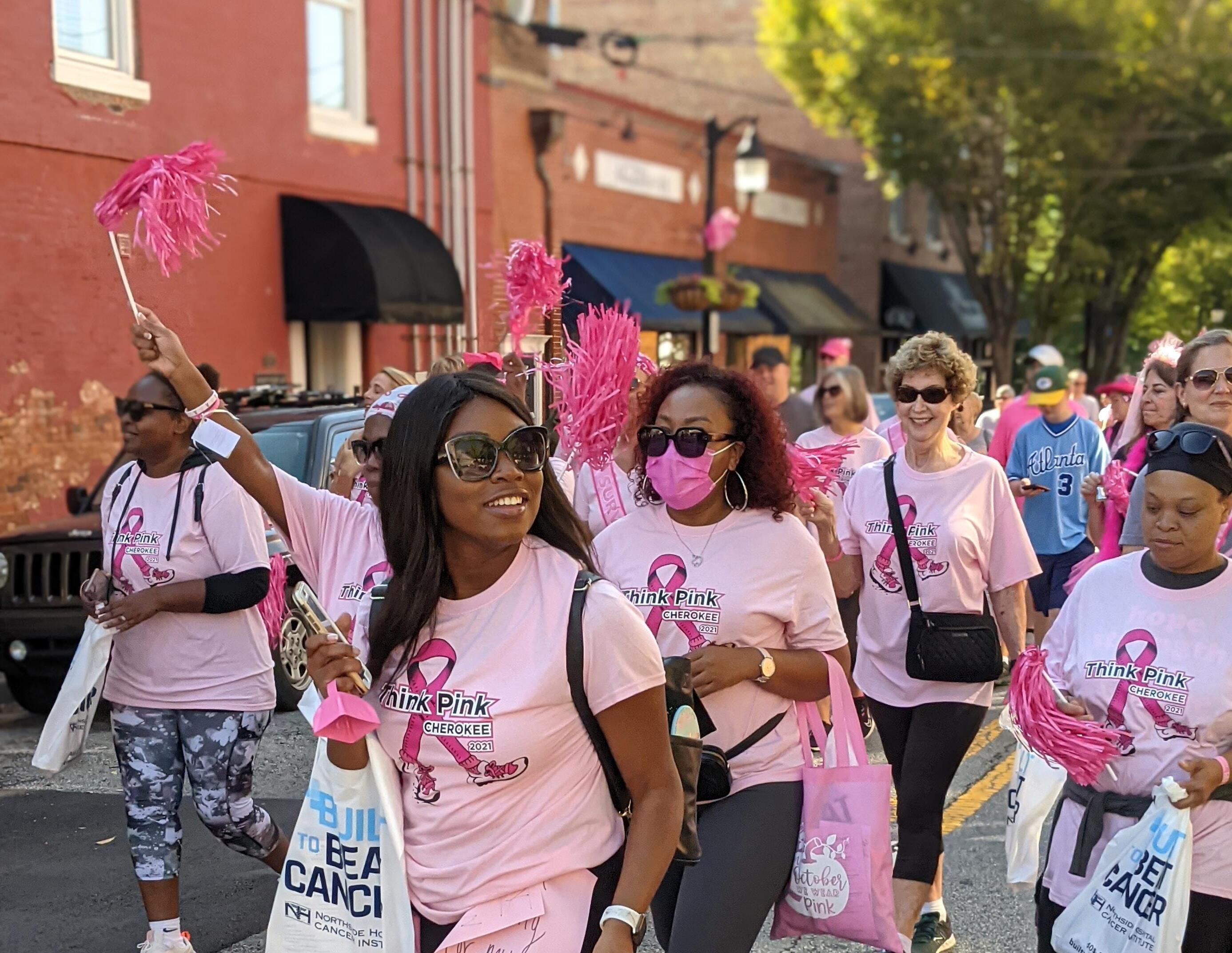
Invest in Canton’s roadways through a variety of public art investments.
Enhance resident experiences through investing in public art along vehicular corridors. Canton’s natural gathering spaces are placed throughout the City and are mostly accessed by car. Therefore, many residents spend a considerable amount of time in their personal vehicles. Enhancing the experience of both drivers and pedestrians along the roadway is an opportunity that is often overlooked in public art programs. Canton should invest in public art on major corridors through a variety of public art types. The lifespan of the following investment range from temporary to permanent.
Time Frame for Implementation: 3 to 5 years
Staff Involvement: Public Art Coordinator, Public Works Staff
Potential Partners: N/A
Relative Cost: $
Relative Impact: Medium
Applicable Roadmap Tenet: Creating Great Neighborhoods Advancing Regional Economic Success
Improving Infrastructure for Future Demands
Crosswalks are a necessary measure for pedestrian safety on major roadways and neighborhood streets alike. A growing trend allows for municipalities to trade the white lines that are recognized as a universal symbol for pedestrian crossing with a creative application developed by artists in the same footprint as a traditional crosswalk. Some municipalities allow artists to use paint on lesser traveled streets and some require pre-printed laminate applied to the asphalt on higher trafficked roads.
Canton should develop a creative crosswalk program that focuses on placing creative crosswalks on city-controlled roadways.
Canton currently has a series of banners that promote a variety of events throughout the year. Banners provide a highly visual, usually vibrant pop of color when driving on major roads. Canton should rotate original artwork by local artists onto the banner poles between event promotion. Calls to artists could be released on a biennial basis. Because these are developed from a high resolution file, visual artists of all mediums could participate in this program.
Canton currently has a number of streets that are receiving upgrades. Sculpture should be considered alongside street trees, wayfinding packages, and other pedestrian amenities to strengthen the experience along these roads.
If roundabouts are being considered, public art should be considered as an option for the center of the roundabout.
1. Identify priority corridors for investment within special tax district and understand any anticipated future investment along the corridors for alignment of funding opportunities.
a.If investment is anticipated on selected corridors, identify available funding for public art along the roadways.

b. If investment is not anticipated on selected corridors, identify additional opportunities for funding.
2. Determine what type(s) of public art should be placed on which corridor(s).
3. Develop procurement process for public art investment along select roadways.
4. Plan for future investment along key corridors.
Consider starting a Tactical Urbanism Artist in Residence Program.
Incorporating public artists into the inner workings of a municipality has yielded creative and unique projects throughout the country in a variety of mediums. Artists think differently than traditional municipal staff members, and placing artists at the center of a relatively mundane municipal necessity like roads will place creative vision at the center of this public infrastructure program.
An artist should be hired through a professional services retainer to assist in the planning and implementation of new roads. Outcomes could include creative community engagement projects soliciting ideas from the community about the structure and amenities offered on new roads, a sidewalk poetry program, or a creative lighting scheme. Special attention should be paid to utilizing art to illustrate upcoming roadway improvements.
Time Frame for Implementation: 1 to 2 years
Staff Involvement: Public Art Coordinator, Public Service Director
Potential Partners: N/A
Relative Cost: $
Relative Impact: Medium
Applicable Roadmap Tenet: Creating Great Neighborhoods
Advancing Regional Economic Success
Improving Infrastructure for Future Demands
1. Identify upcoming projects that would be good candidates for tactical urbanism interventions.
2. Determine how artists could best be involved in illustrating new traffic patterns being proposed by major transportation projects.
3. Determine a budget for the tactical intervention(s).
4. Determine procurement process for hiring artists to participate in the project.


The following pages are filled with big ideas for projects that are anchored by public art and are meant to generate excitement and inspire future projects throughout the City of Canton. While many of these ideas could be directly implemented and see immediate success, they are meant as a starting point to demonstrate what could be, not necessarily what will be, as an artist will be driving the ultimate experience of every public art installation the City commissions.

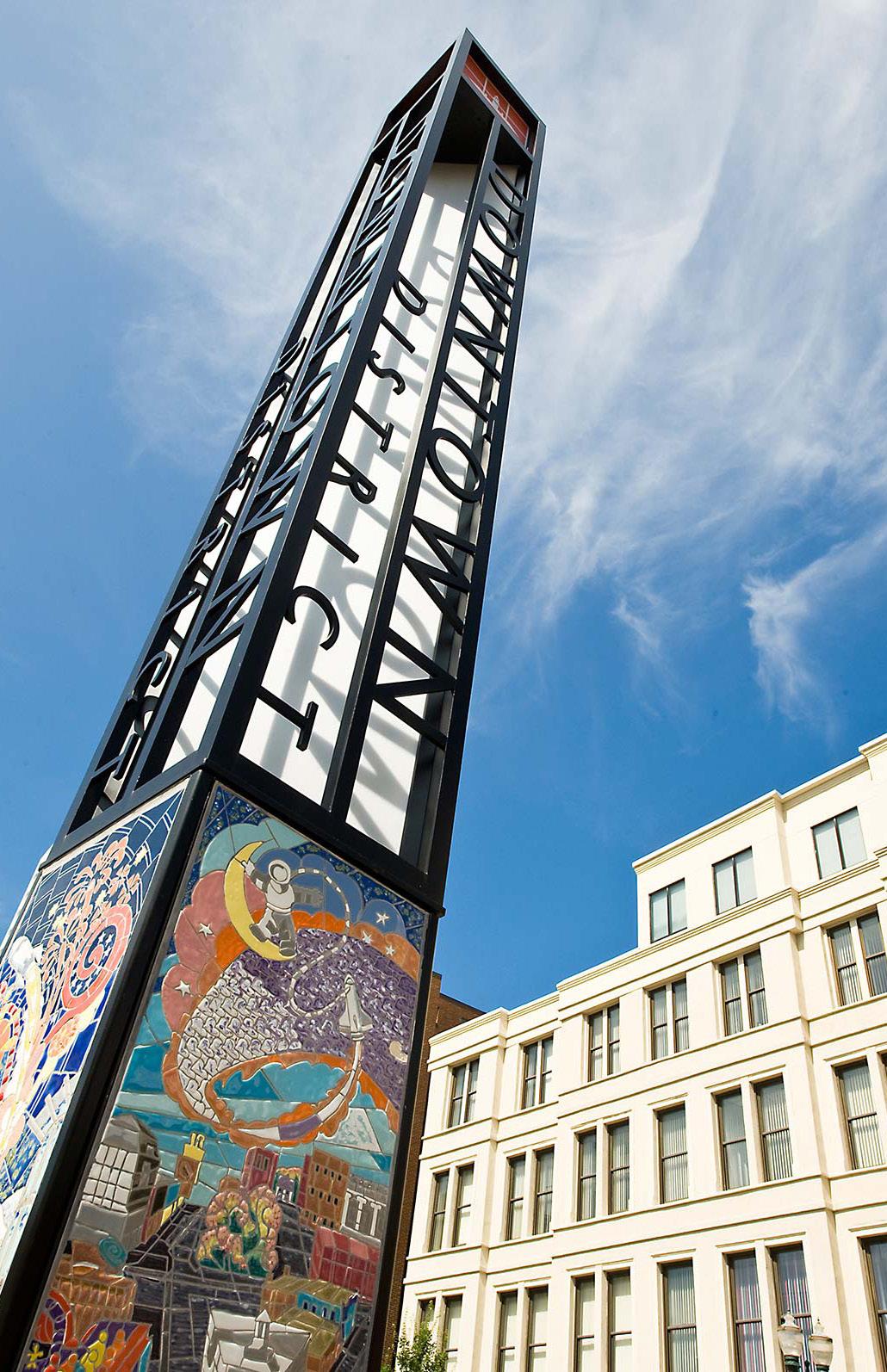
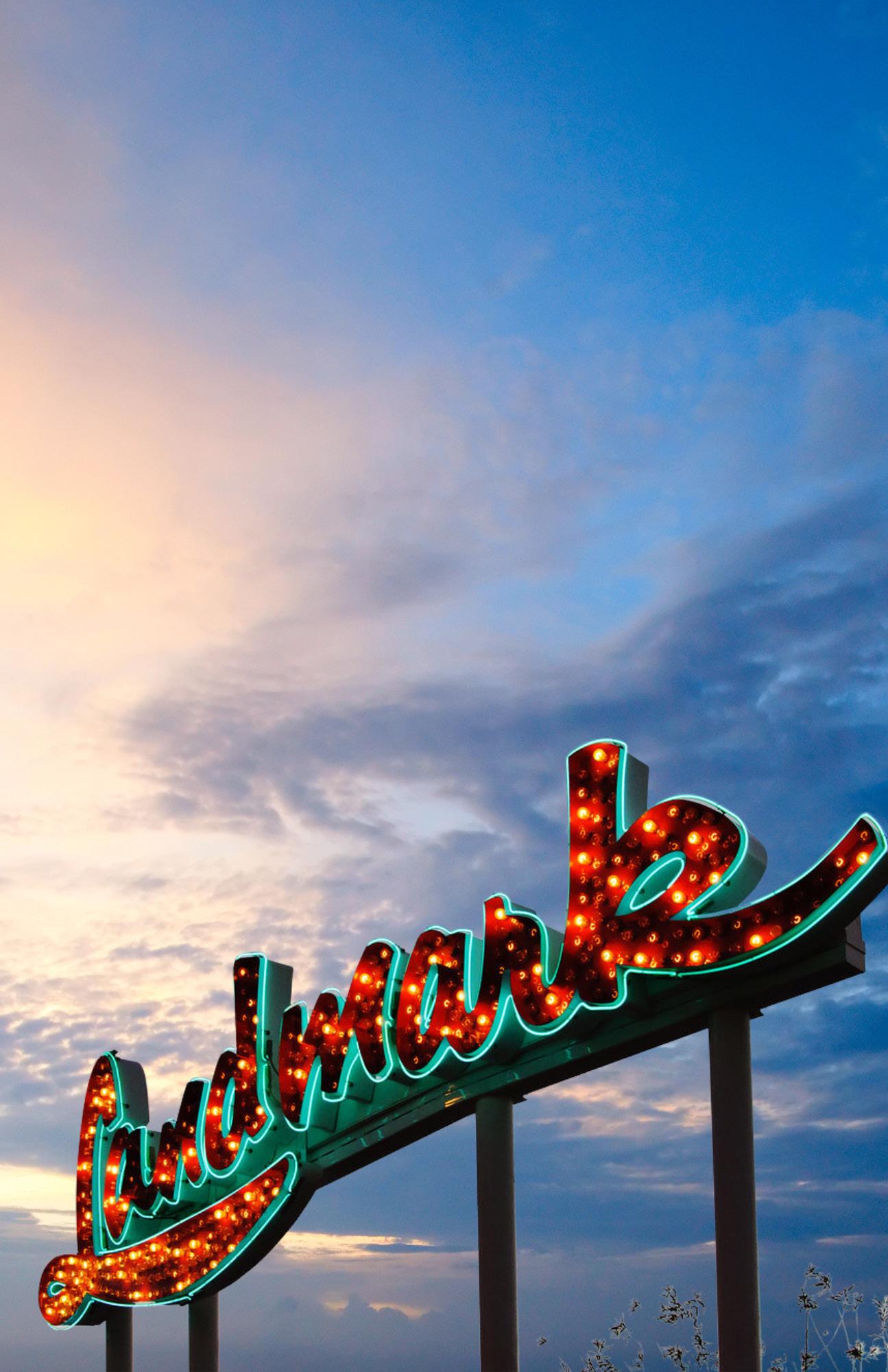
Idea: There are a number of gateway locations as you enter the City of Canton. Besides residents who are entering those gateways daily to go to and from work, millions of visitors pass by on their way to and from the mountains from Atlanta or from the mountains on their way to Atlanta. Featuring a series of public art pieces at prominent gateway locations will help develop a signature identity within the region and could help pull visitors into Canton to enjoy all of the amenities the City has to offer.
An artist could be commissioned to develop all of the gateway pieces, or a number of artists could be commissioned to develop each individual piece.

Cost:
$100,000 - $200,000/ gateway
Roadmap Tenets


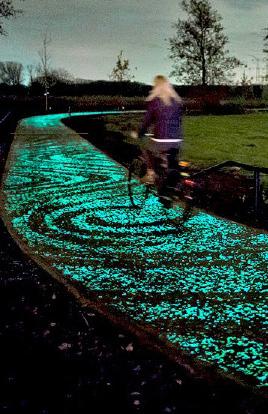
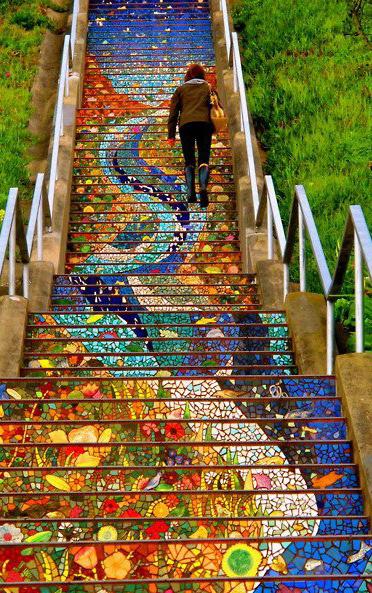
Idea: Canton boasts many trails and there is no end in sight to building more! To enhance trail users' experiences and their exposure to arts and culture, public art should be made available for exploration along each trail. A specific theme should be considered for each trail. Themes could be a color, natural flora and fauna, animals of the region, or simply play. For existing trails, a budget should be proposed and an ideal number of pieces should be determined. For new trails, public art should be budgeted and planned for in the planning process. At minimum, the City should consider sculptural elements at every trail head.
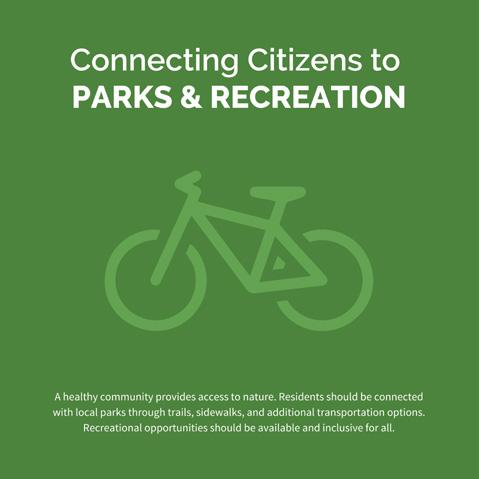
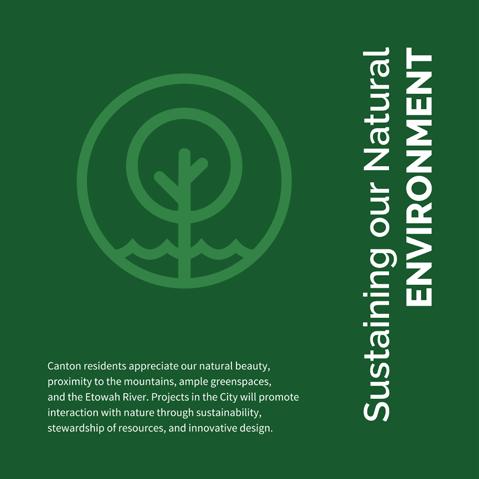

Roadmap Tenets
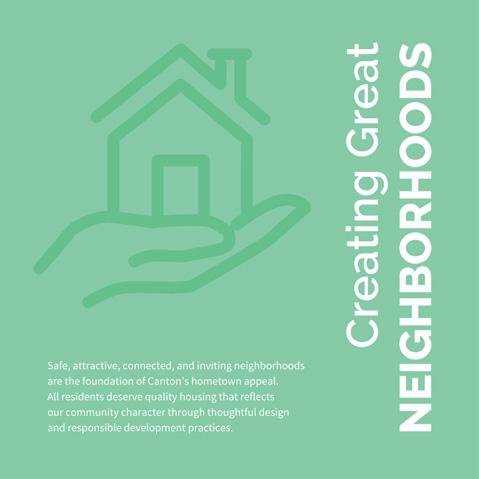

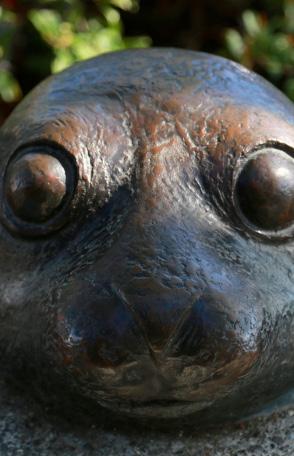

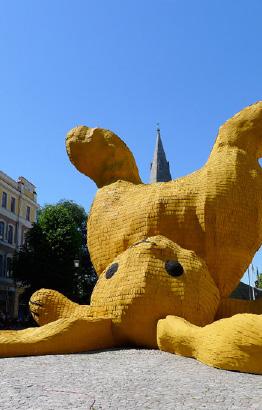
Idea: Canton is seeking to become a mountain biking destination for the region with the potential to invest in ample courses for a range of riders. The City should consider honoring the historic Canton Denim brand, and its mascot as a guardian of the mountain by creating a series of Salty Dog sculptures for the entrance to each mountain bike trail or other location in the city. The Salty Dog tagline was “Soft as a puppy and rugged as an old Hound Dog.”



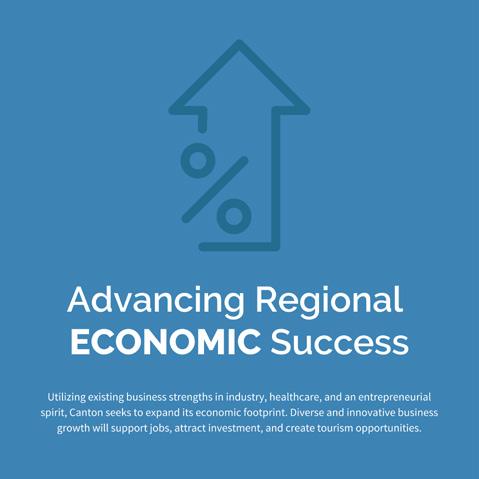


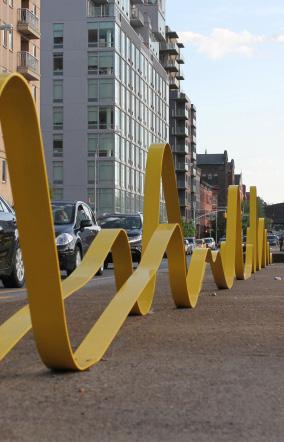
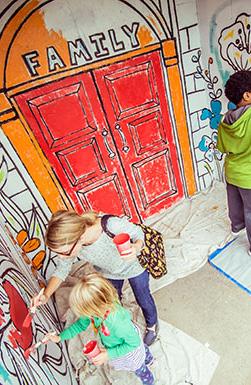

Idea: A number of specific placemaking activities should be considered in historic downtown Canton. All efforts should be directed by an artist or artist team.
As the city invests in improvements to specific alleys within downtown, a number of improvements could become standard within alleyways and in small vacant parcels including access to electricity and improved pedestrian access. Artists could develop programming throughout the summer and could include overhead lights, interesting plant material and pedestrian amenities- creating new public space in downtown Canton.
Throughout downtown, there are locations within the right of way that extend further than the sidewalk. All of the bumpout extensions are well landscaped and could offer locations for small-scale sculpture. Many communities host an annual sculpture tour in which sculptures are placed in various locations throughout a specific geographic area for the public to explore at their leisure. Canton could select 10 locations throughout the downtown area and place plinths to support small-scale sculpture. Artists could be invited to submit sculpture from their collection for the duration of one year. The City would pay them a stipend and could purchase one sculpture annually to add to their collection.
The City of Canton could run a poetry contest for written word and song lyrics up to 200 words. Writers of every level should be eligible to submit. The City could decide to physically
stamp poured concrete with selected work, or stencils could be made and paint could be applied to the stencil on the sidewalk. This project will create an opportunity for non-public artists to participate in the public art program through a different medium than visual art: written word or song. Over time, this investment will provide residents and visitors with surprise and delight in their day-to-day life.
Cost:
Artists stipends: $500
Stencil Cost: $50-$150/stencil
Cost of paint to apply content: $20

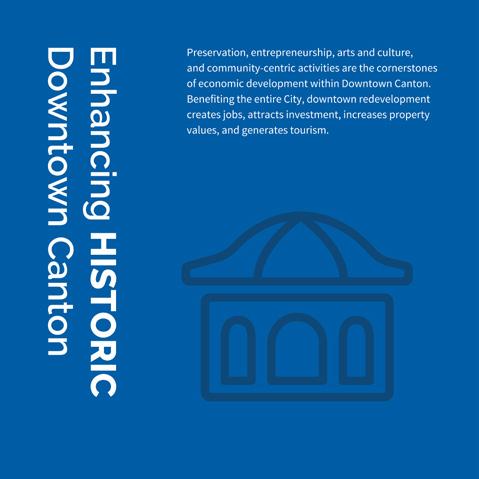

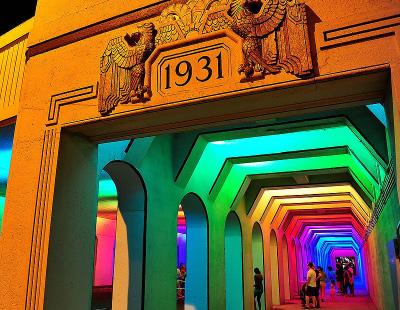


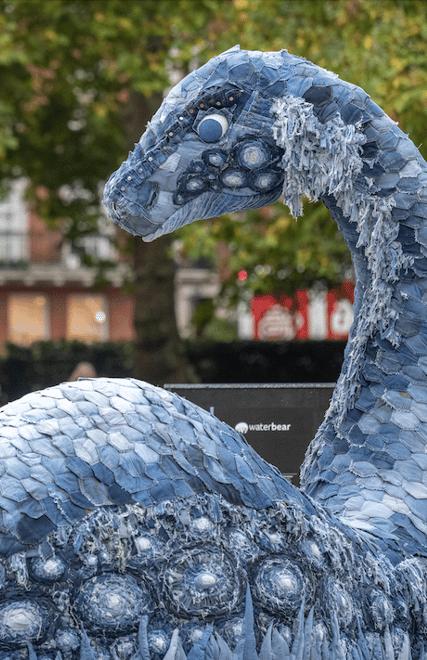
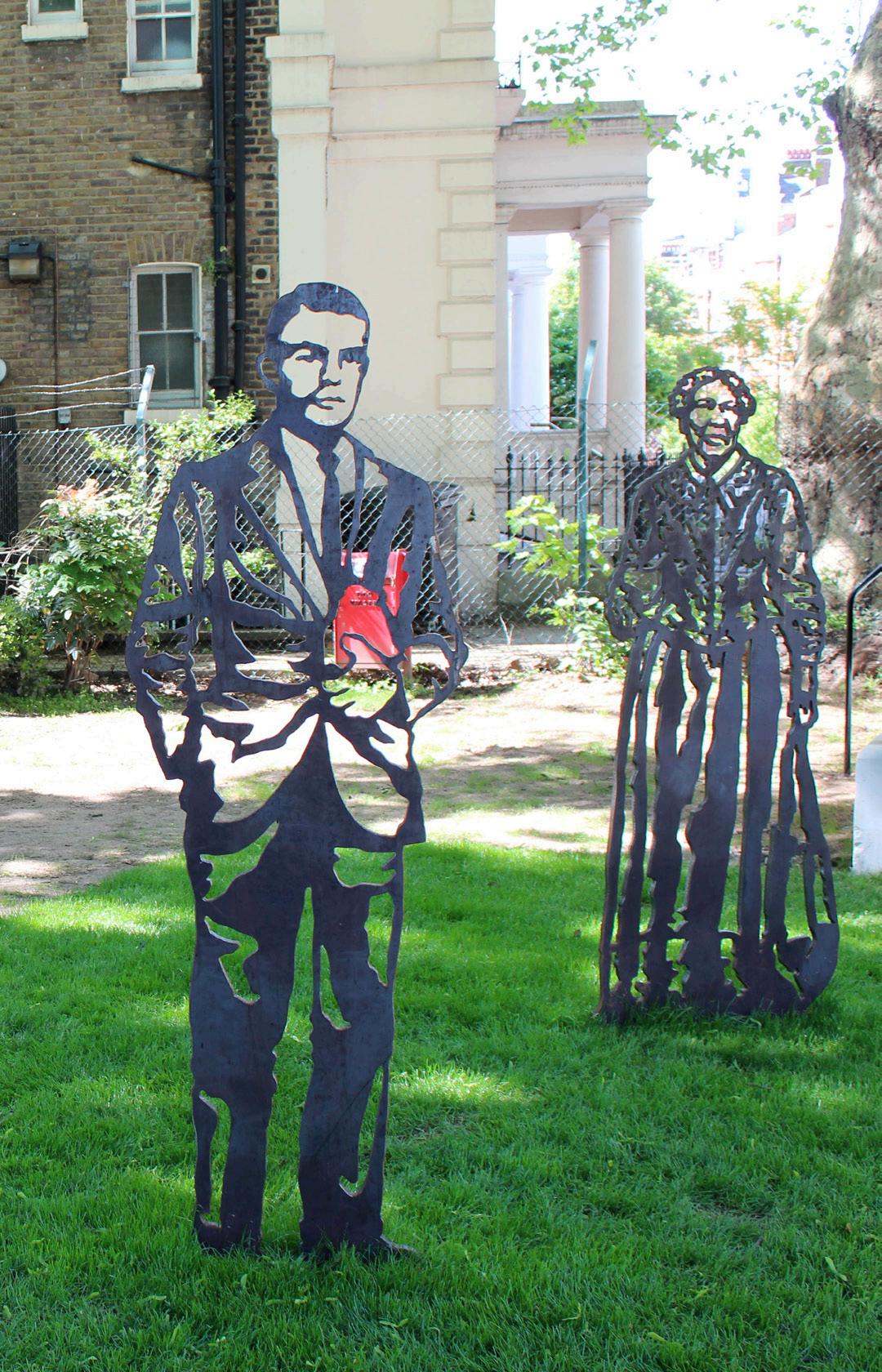
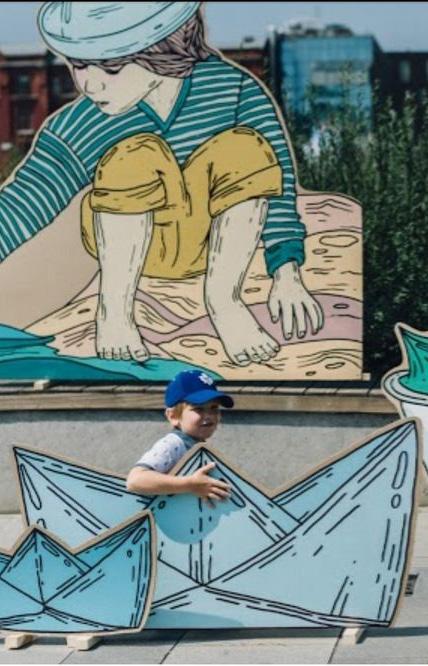
Idea: Canton’s Denim Era played a major role in shaping its identity in Northwest Georgia. Honoring the past through a series of jean sculptures that are for all differently-sized people would celebrate the history of the City and its role in shaping the fashion scene throughout the 1900s. Jean sculptures could be placed throughout downtown, in commercial areas, and in parks to provide people of all ages an opportunity to stand behind them and pose for photos. The sculptures could be wide legged, skinny jeans, flare, high-waisted, or slouchy. These sculptures could be permanent or temporary and could become an opportunity to cement and celebrate the City’s history.

Cost: $5,000- $10,000/ sculpture
Roadmap Tenets





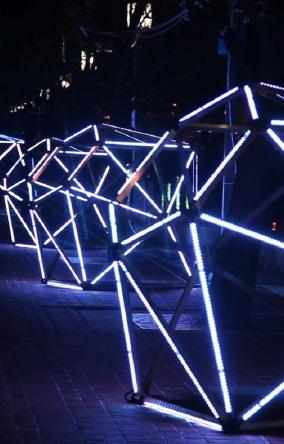
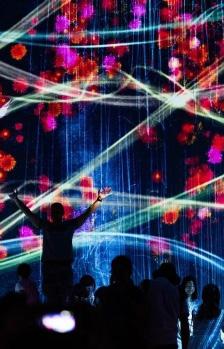
Idea: Lake Canton provides a picturesque and serene setting to experience Canton’s great outdoors. Activating the lake through temporary light experiences would provide residents and visitors an opportunity to experience the water at night. A temporary light show could be commissioned that takes visitors around the lake.



The City could also host an artist in residence to work in the school system to develop lanterns with students. Once complete, the students and their families could participate in a lantern parade along the lakeshore and enjoy the light reflecting off the water.
Either option should stack cultural experiences including live music and food.

Roadmap Tenets



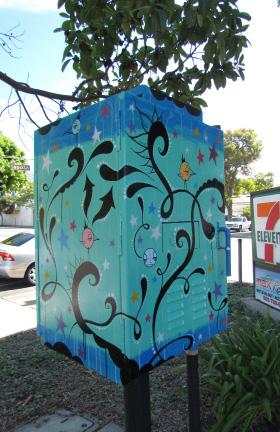


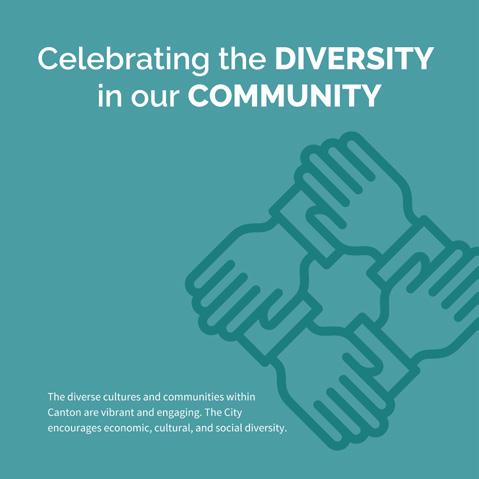



Idea: Utility boxes come in all shapes and sizes and provide great opportunities to showcase artwork. Cities across the country are working to beautify their streets through utility box programs that place artwork on all sides of the boxes. Artists can paint directly on the boxes or a vinyl wrap can be created and applied so removal of the artwork is simple. This is especially effective in warm, sunny climates. Wraps also provide an opportunity for nontraditional public artists to participate in a public art program as the vinyl clings are made from high resolution images that are made into vinyl clings.
Cost:
Vinyl Wrap: $1,500/wrap + Artist stipend ($500-$1000/artist)